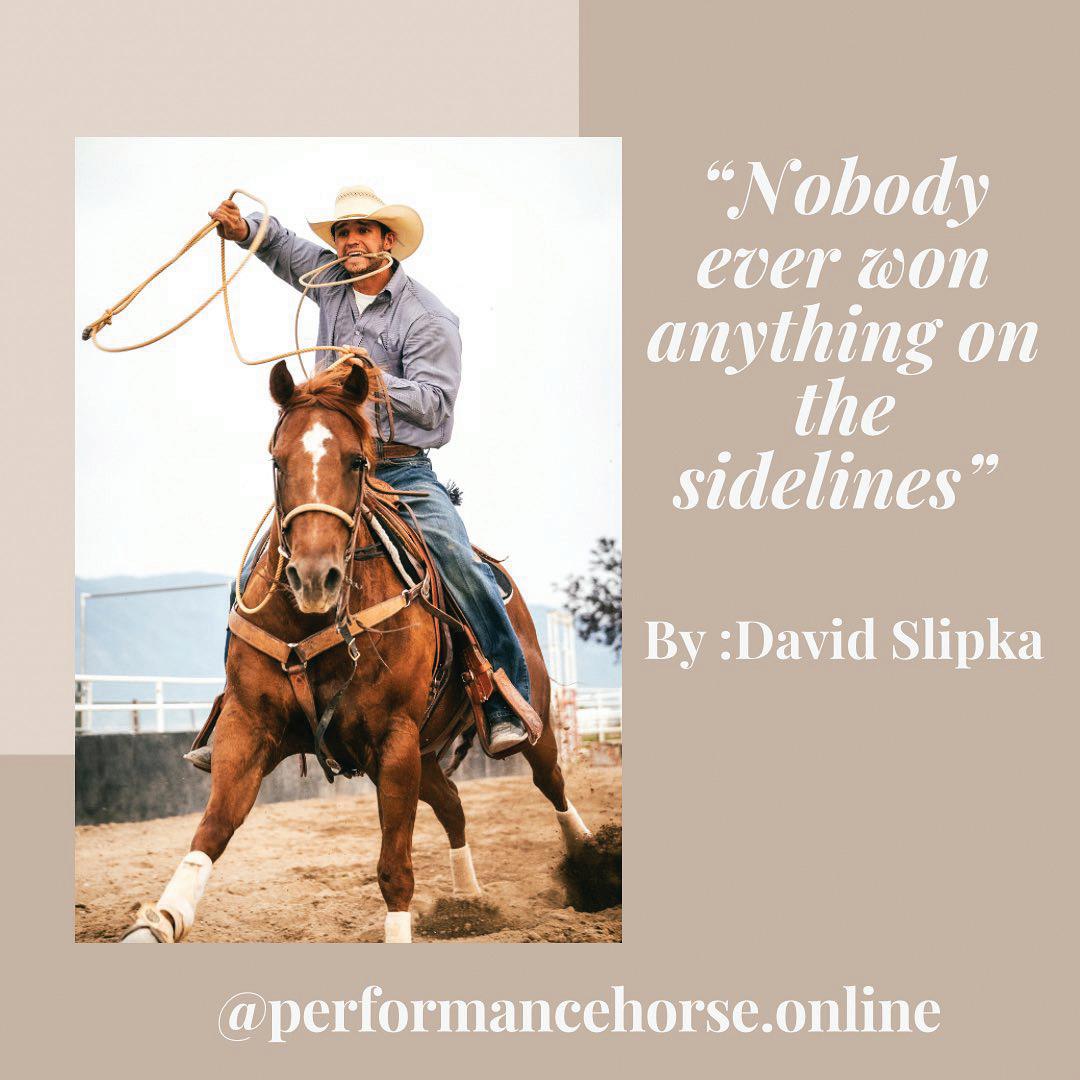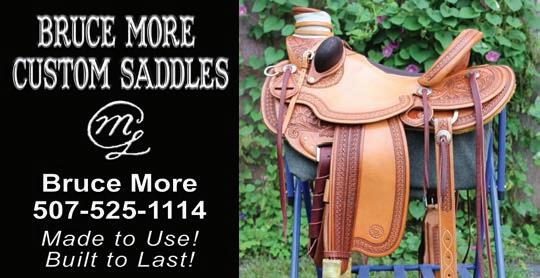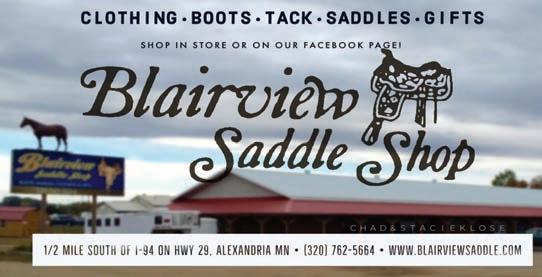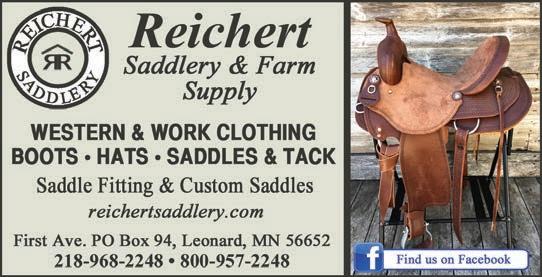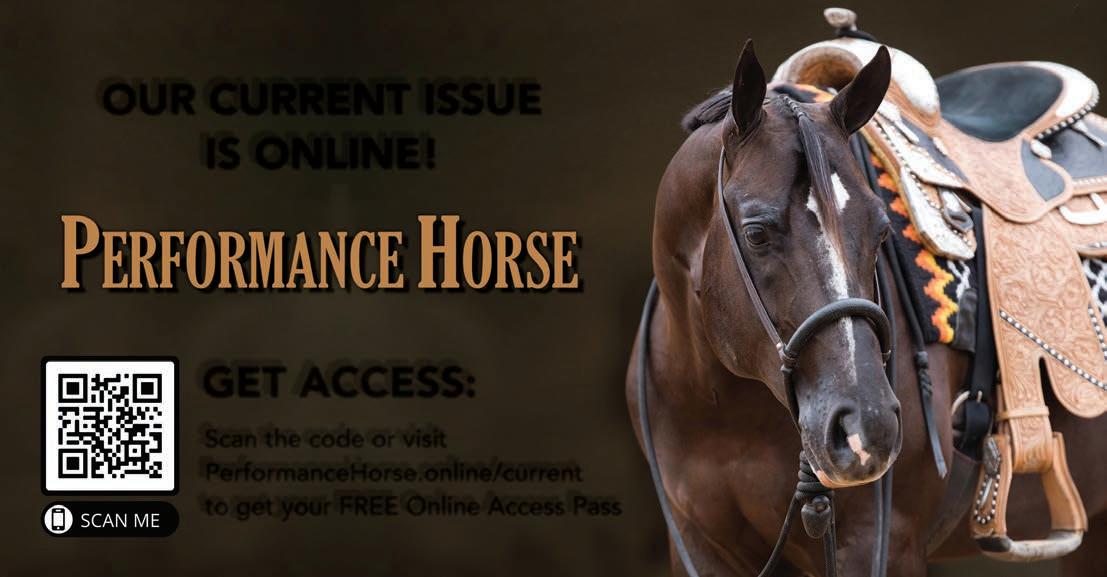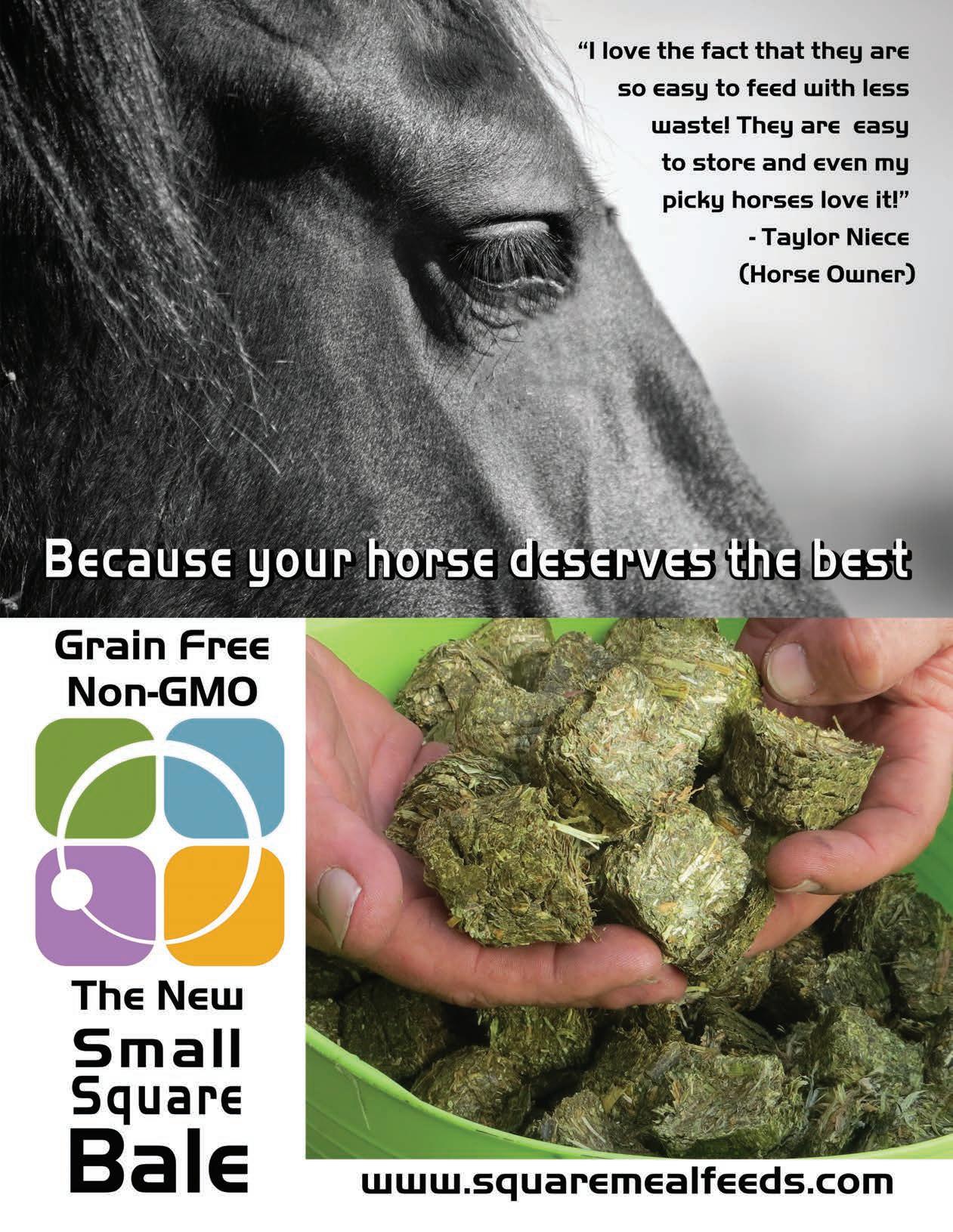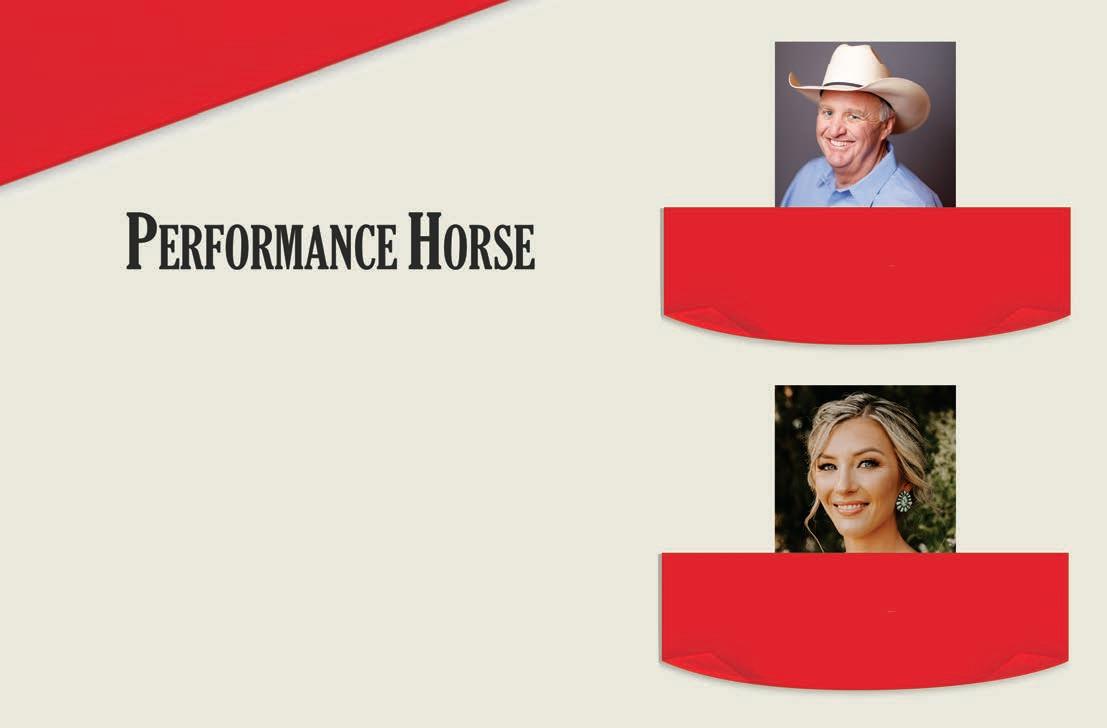






Be True to Yourself 08
by Barbra SchulteIn this article, I respond to a question I recently received.
Pathologies: Laminitis - General Overview
by Kerry HaughAs we continue our series of articles we will start to discuss some pathologies.
10
How is it October Already? 20
by Chevy (Siobhan) AllenFor some of us, October means the end of show season.
Cross-training with Western Dressage 28
by Lynn PalmAre you passionate about becoming a true partner with your horse?
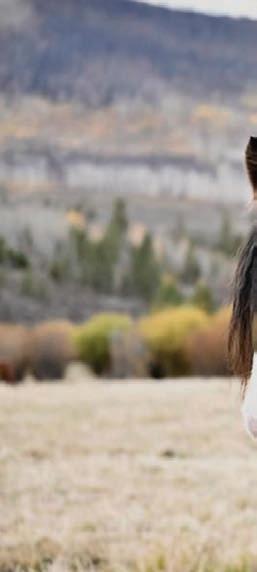
Behind the Camera at the Cowboy Channel 32 & Cowgirl Channel
byScott Knudsen, The Cowboy Entrepreneur
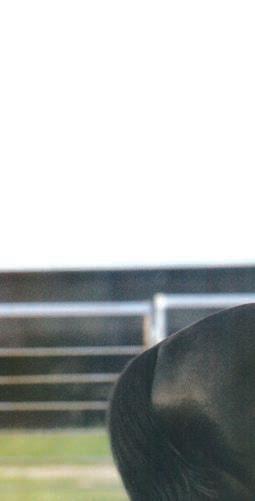
Rural Media Group, Inc. is the world’s leading provider of multimedia content dedicated to the rural and Western lifestyle.
Four Reasons Why Your Lead Changes are 38 Going Wrong
byClinton
AndersonLead changes are a subject that got me upside down and frustrated as a young horseman.
Curb Strap, Curb Chain 40
by David SlipkaIt’s one of the most misunderstood pieces of equipment used on your horse.
At 86, AQHA Judge & New Mexico Horseman 44 Writes First Book
 by
by
Ed Armstrong, Armstrong Equine Service
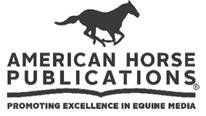
Many of the best horsemen to ride this earth have gathered their techniques and information over decades.
Fall Ranch Recipes
Pumpkin Chocolate Chip Muffins & Sausage Sweet Potato Skillet
16 Horse Goals or Bust Part 3: Prepare for the Unexpected by Julie
GoodnightAfter months or even years of setting goals, planning, training, practicing, and preparing, it’s finally time to put it all into action!
22 Mustang Shows
by Dennis CappelHorse shows are great venues to display what you or your ranch has been focusing on.

45
42 Lighten Up
by Mike MajorSome horses naturally are light, but even a heavy horse can change and become light, and that’s what I see most often at my clinics.
Take the Time
by Craig CameronThe snaffle bit is a training bit, but you could ride a horse in it for his entire life. Sometimes there isn’t a reason to change.


© 2015
PO Box 186, Blue Earth, MN 56013
Welcome! We are a National magazine featuring training tips & Western lifestyle for the Pro Competitor & Rancher, and the Horse Lover in us all.
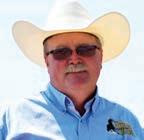

@performancehorse.online
FOUNDER
Rahn Greimann
1959 – 2022
PUBLISHER
Shelly Greimann, Owner 507-526-5943

shelly@performancehorse.online
EDITOR
Makie (Greimann) Bloomer 507-526-5943
makie@performancehorse.online
ADVERTISING
Chris Maedche 505-681-3595
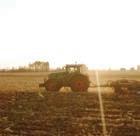
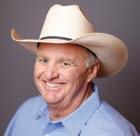
adsalespro@hotmail.com
ADVERTISING
Savanna Escobar
620-886-0313
savanna@performancehorse.online
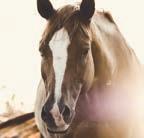
SOCIAL MEDIA

Shaylee Hilsmann
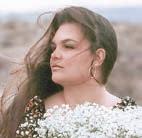

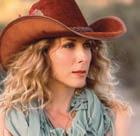
shaylee@performancehorse.online
SUBSCRIPTIONS
subscriptions@performancehorse.online
507-526-5943
ACCOUNTING
Vanessa Bromeland
vanessa@performancehorse.online
Dear friends,
October for me is always full of expectations and hope. It’s ironic that autumn feels that way for me more than spring does. I think it’s because we have come out of a long sultry summer and the cooler temperatures and crisp air give us a renewed sense of vigor and action. We are in the season of world and futurity competitions, businesses are planning ahead for the next year, and we are getting our ranches and farms ready for winter weather that is soon to come. It is a season of change and excitement for many.
change and that they are simple and fundamental. We also were reminded that each and every one of us is so very loved and cared for by a loving Father in Heaven and our Savior Jesus Christ. We were encouraged to keep the lines of communication open with those who are struggling. We were again told to serve and uplift and not tear down or judge one another’s circumstances. Home and gospel centered learning for our youth and our children is of utmost importance as we continually strive to exist in this world of uncertainty.
We were invited to remember Him and to hear Him. To pray and read our scriptures daily, to have inspiration in our personal lives and to have discernment over all the information we are bombarded with daily.
mentors. We must shine a light for them and they in turn will be able to lead by their examples and by their faith. Dear friends it touches everything we do and everything they will do. Be it in a horse arena, sports, entertainment, at school, or at work. Who we are, whom we follow and exemplify is evident in every area of our life.
I recently attended a statewide training session led by leaders of my church. At this time we have over 17 million members with churches worldwide and over 60,000 young men and women who are serving missions all over the world. That is amazing to me. My 20-year-old grandson is one of them. I will come back to this point a little bit later.

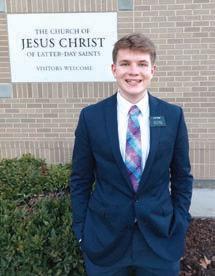
In this training we were reminded over and over that gospel truths never
We were again explicitly reminded that the youth of our day were sent to earth for such a time as this. They are strong, smart, talented and resilient. If we give them the foundation to stand up and think for themselves and to build their testimonies we will have nurtured a great generation.
And that brings me back to my grandson who has given two years of his life to teach people the gospel of Jesus Christ, and to all the young men and women who are continually striving for excellence in all they do. My generation and many of you are their examples and
It is my fervent hope and prayer that our young people will remember that they are noble sons and daughters of God. That they are empowered by his sacrifice and love for them and that they will go forth with remembrance that they are strong and can stand firm and exact. (Exact means to practice, commitment, to keep performing – that so ties in with our horses and love for them)
Thank you to all of you who teach lessons, who support your children in their activities, who show them what an honest days work can mean, and how to serve and love others.
May God bless you all,
Shelly Greimann Performance Horse Publisher/Owner

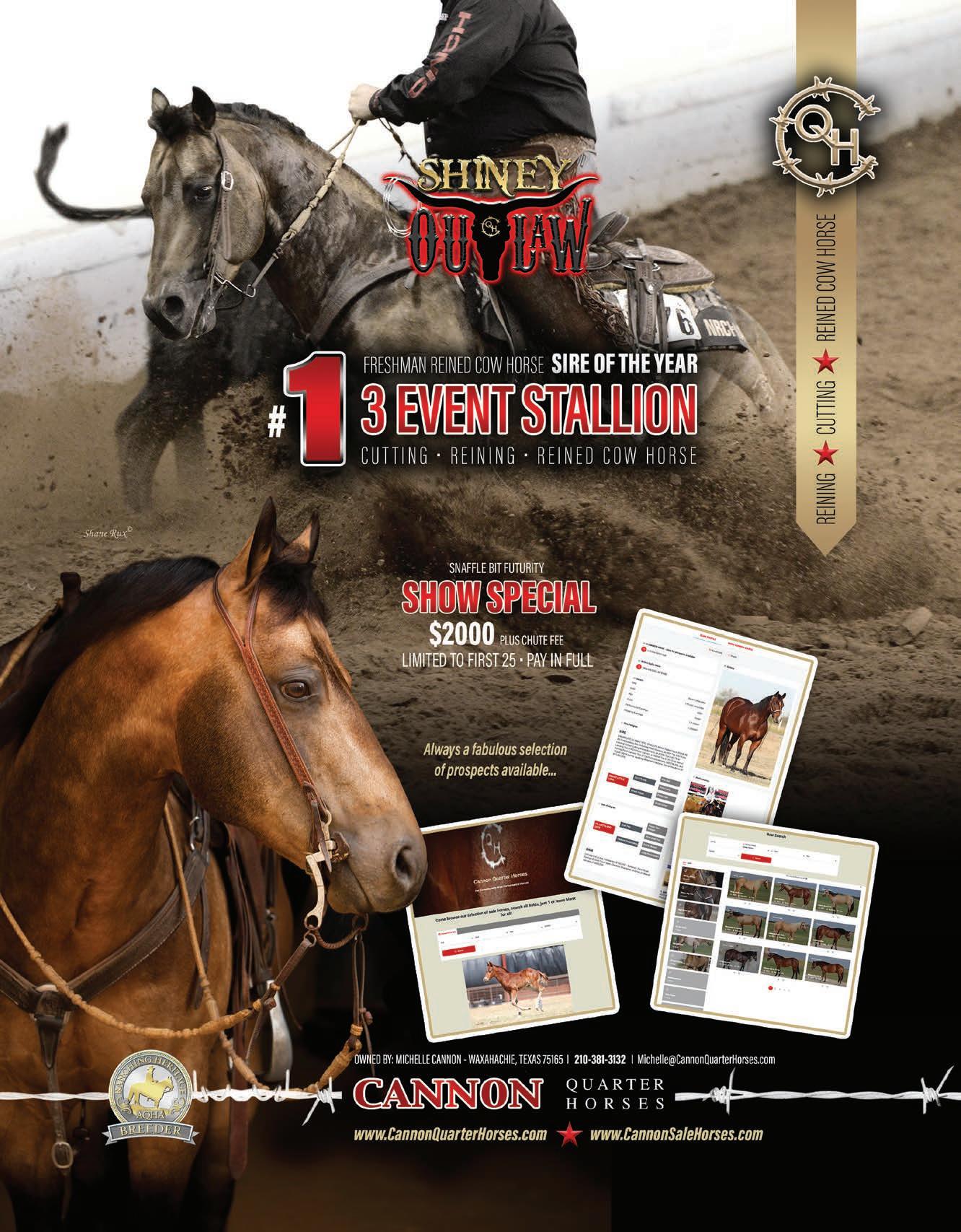
In this article, I respond to a question I recently received.
Linda has a mare, and she’s been showing her for years. The horse is an outstanding performer, and the owner has confidence in that. But the rider never knows what to do when she gets to the show. I don’t know exactly what she does, so I only have a few details about that.
But the question is, how do you overcome that? Or what do you do with that situation and when?
I don’t have a definite answer to that question because it depends on many things. But here’s one thing that I can say for sure. Whatever you decide to do, make sure you believe in it, and that’s what you want to do.
And by that, I mean if Linda wants to try another horse and allow this horse to either chill in the pasture or maybe be with someone else who might enjoy her in whatever way they do -. the same job or a different job, she could go on to another person.
That is a personal decision. Do what resonates with you. Some people might want to keep trying with the same horse. That’s, of course, fine.
But if Linda feels more comfortable moving on to another horse that’s more suited to the job for her, that’s great, too.
Everything in our journey should be according to what makes us authentically happy. Many people tell us what we need to do and think. Whatever each person decides to do is most important – be true to yourself.
Barbra is a personal performance coach for all riders, a cutting horse trainer, author, speaker, clinician and 2012 National Cowgirl Hall of Fame Inductee. Visit her Blog and signup to receive her FREE monthly email newsletter, “News From Barbra”. Go now to BarbraSchulte.com.
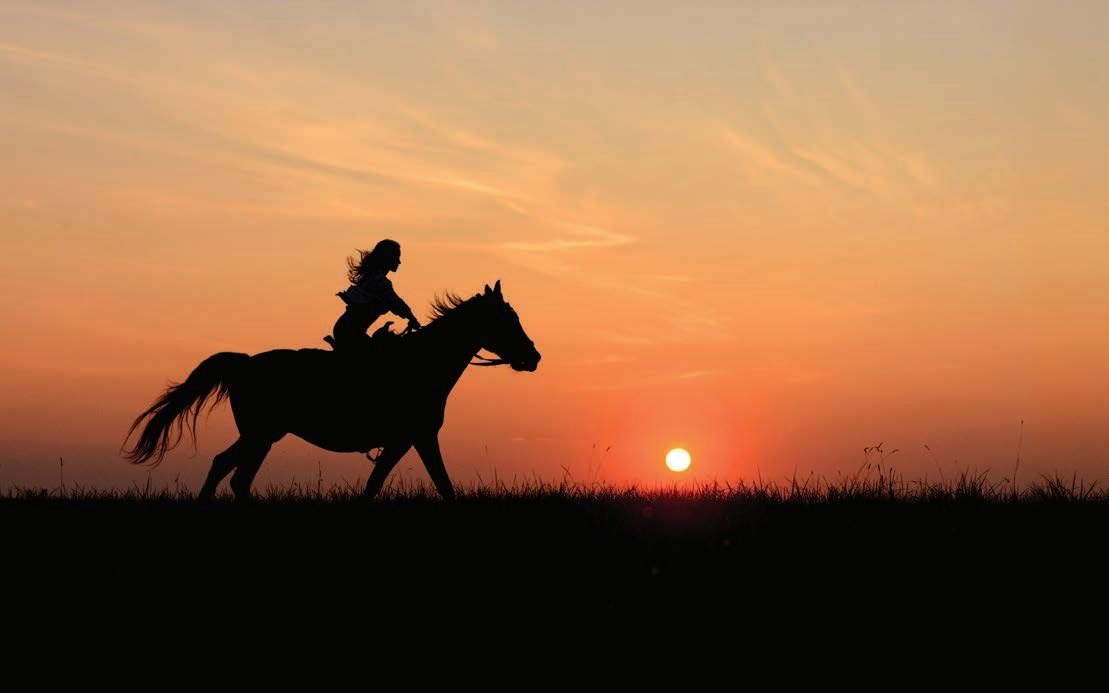
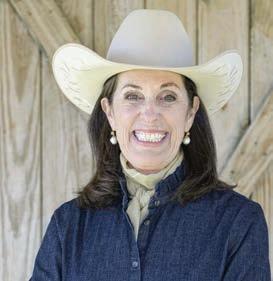

You will often see the terms “laminitis” and “founder” used interchangeably, however it is important to note that they are considered two separate conditions, or at least, different stages. Laminitis by definition is “an inflammation of the sensitive laminae,” remember our article about anatomy of the foot? The term “founder” has been associated with the ac-

tual displacement of the coffin bone within the hoof capsule as a result of laminitis. It is possible for a horse to get laminitis and not end up with founder, however, a horse cannot founder without first having laminitis. This is a very general, classic view of laminitis and founder. As research on laminitis has increased over the last 40 years, the understanding of the disease and the classification of each phase of laminitis
has been enhanced. Many of the newer veterinary texts classify laminitis into three categories: subacute [mild], acute [severe], and refractory [unresponsive]. In reference books such as Adam’s Lameness in Horse [5th edition] and Equine Laminitis by Dr. Chris Pollitt, the continuation of acute laminitis that is generally called “founder” is now more specifically classified as chronic laminitis.
The chronic stage begins at the first sign of movement or displacement of the coffin bone within the hoof capsule. Chronic laminitis is also divided into categories based upon the stage the horse is in. In early chronic laminitis, “chronic active” and “chronic stable” are some of the specifications commonly seen or discussed in a veterinary diagnosis. The early chronic stage begins as soon as the coffin bone starts moving [either rotating or sinking]. If the coffin bone continues to rotate or sink and does not seem to stabilize, it becomes classified as chronic active laminitis. If chronic active laminitis continues, the horse could slough the hoof capsule or the coffin bone could penetrate the sole.
On the other hand, if the coffin bone becomes stable within the hoof capsule, meaning the rotation or sinking stops, the condition is classified as chronic stable laminitis. At this point, the hoof and sole will start to produce some healthy tissue and the horse will steadily improve. It is common to see hoof growth variations like irregular hoof wall rings, dropped soles and seedy toe. This horse may not achieve 100% soundness, but they are at least not actively chronic. Many of these horses are found to have Cushing’s-like syndrome,
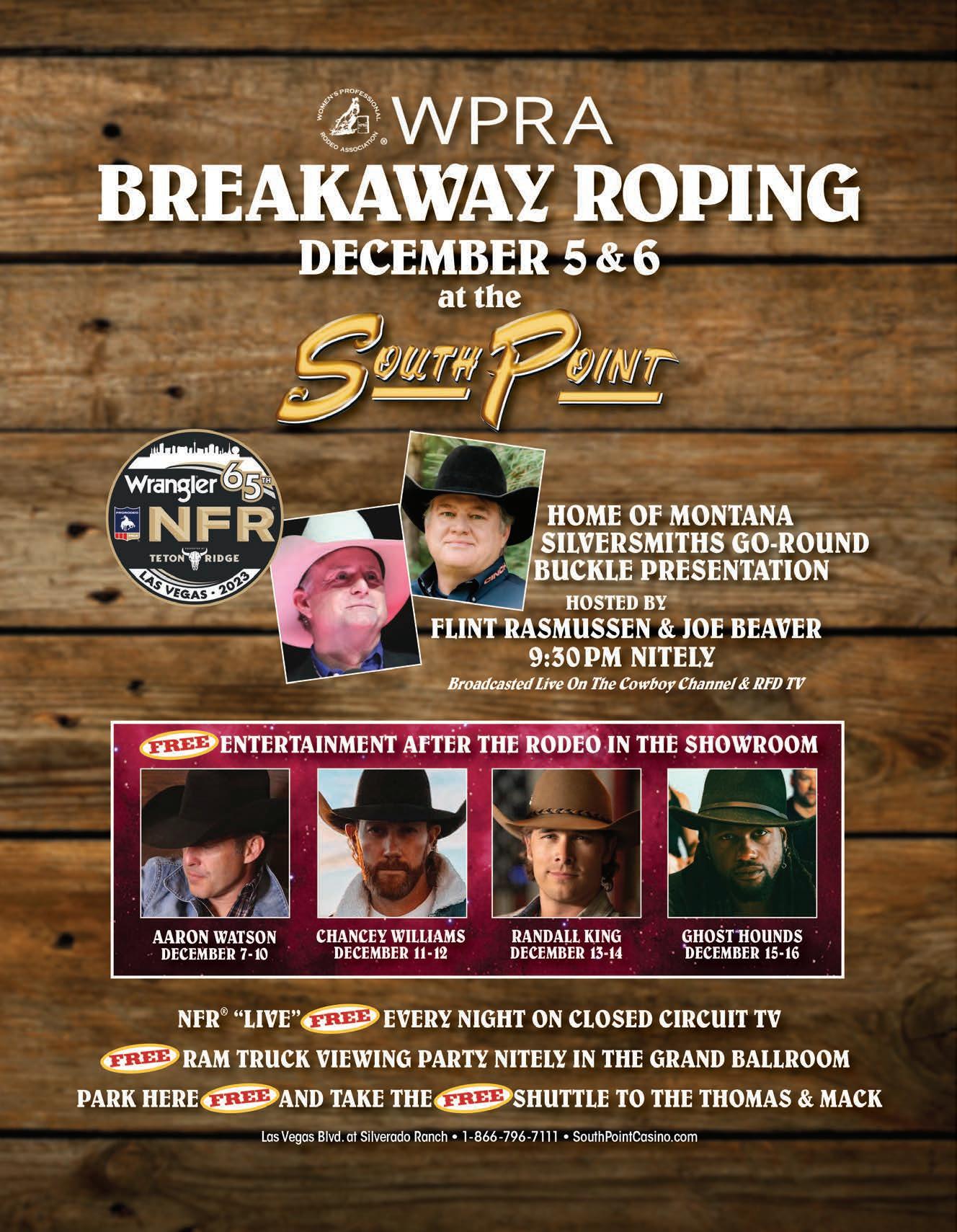
insulin resistance [IR] or some other metabolic condition that is frequently classified as Equine Metabolic Syndrome [EMS].
There are believed to be many causes of acute laminitis and the “exact” cause is not always known in every case. Some horses can develop laminitis by being over worked on hard surfaces, commonly known as “road founder”. Other horses have been known to develop acute foot pain and laminitis as a result of excessive trimming of the sole around the distal border of the coffin bone. You may hear terms like “grass founder” that are associated with excessive consumption of fructan [from lush pasture grass] starch [from excessive grain] or other carbohydrates [some mixed feeds or grass]. Too much of any of these components has been said to cause a gastrointestinal disruption that somehow leads to the development of laminitis. However, there are still non-foot and non-gastrointestinal related causes such as retained placenta, endotoxemia, and horses that “ tie up”severely. Many
of these conditions and how they affect the laminae are not fully understood; only that the increase in heart rate, fever, sweating, colic, diarrhea, rapid breathing and stress seems to increase the pain in the foot. When pain and inflammation of the bone starts, it is believed to be responsible for the involuntary and uncontrollable tension in the flexor muscle and deep digital flexor tendon, putting more strain and pain on the laminae and sole corium. If the pain and inflammation is not controlled, hoof wall separation, vascular disruption, and sinking is likely.
In cases of “Founder” or “Chronic Laminitis” you will hear the terms describing the condition as rotation or sinking. These are basically descriptions of how the coffin bone is responding to the hoof wall.
Rotation is the most common type of hoof wall movement and in most cases is easier to manage, as the proximal aspect of the coffin bone and the hoof wall maintain their relationship, and only the distal borders are being leveraged apart. The term “rotation” has commonly been used when the dorsal surface of the coffin bone stretches or separates its distal [bottom] attachment from the hoof capsule and appears to rotate downward. As a rule, the coffin bone maintains its general position relative to the ground. The displacement of the hoof capsule is dorsal and proximal [forward and upward]. The tipping of the bone that is seen later is generally a result of extra heel growth.
Separation or rotation measurements can be very slight [2-5 degrees] or quite severe [15-18 degrees or more]. Some veterinarians will base their prognosis or their decision to euthanize based upon the amount of rotation. The most common technique for measuring rotation is to measure the angle between the dorsal [front] surface of the coffin bone and the dorsal [front] surface of the hoof capsule. Although this method is useful and widely accepted, common non-laminitic hoof capsule distortion is not always considered. For example, a horse could be diagnosed with 5 degrees of rotation but not actually have rotation or laminitis. We commonly see horses with hoof capsule distortion
where the laminae and wall have become stretched causing a non-parallel relationship between the dorsal surfaces of the coffin bone and hoof capsule, however, no clinical signs of laminitis are seen. Club feet that have been poorly managed are a good example of this.
Keep in mind that it is critical that you should understand the horse’s condition by gathering as much information as possible before determining the horse’s fate. The decision should always be based upon more than just the measurement of rotation or separation. The speed at which first aid is applied to the foot, how quickly the coffin bone becomes stable, how much circulation is compromised, and the amount of coffin bone loss are all factors that need to be considered. The sooner the condition can be safely addressed, the better chances the horse will have of returning to soundness.
Laminitis cases that are termed “Sinkers” tend to be the most complicated cases. This condition occurs when the coffin bone loses most of its attachment to the hoof capsule and moves distally [downward] in the hoof capsule [or the hoof capsule moves proximal] to the coffin bone. Measuring the amount of distal displacement of the coffin bone within the hoof capsule. With proper radiographs with the hairline properly identified, a measurement is taken vertically from the hairline to the proximal end of the extensor process of the coffin bone. Most domestic horses seem to have some distal displacement that is considered normal [up to 10 mm or 1/2 “] If the amount of distal displacement is 18, [3/4”] or greater than the chance of a full recovery is less likely.
Next month I will continue discussing first aid and shoeing options to help manage these conditions.
As always, I appreciate the opportunity to share information with you all.
Kerry Haugh President, Equine lameness Prevention Organizationwww.lamenessprevention.org
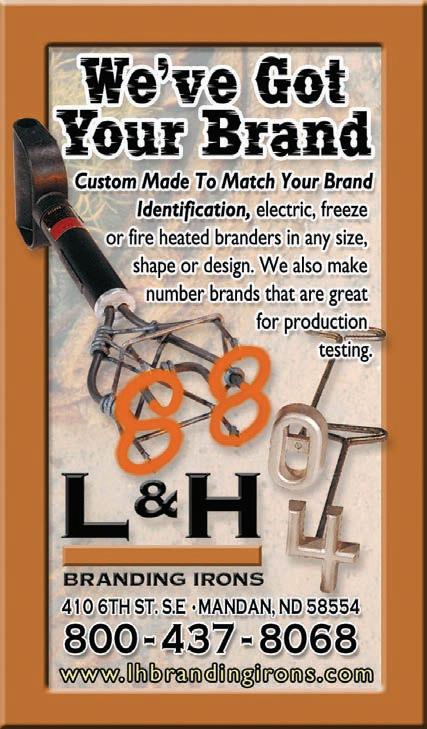
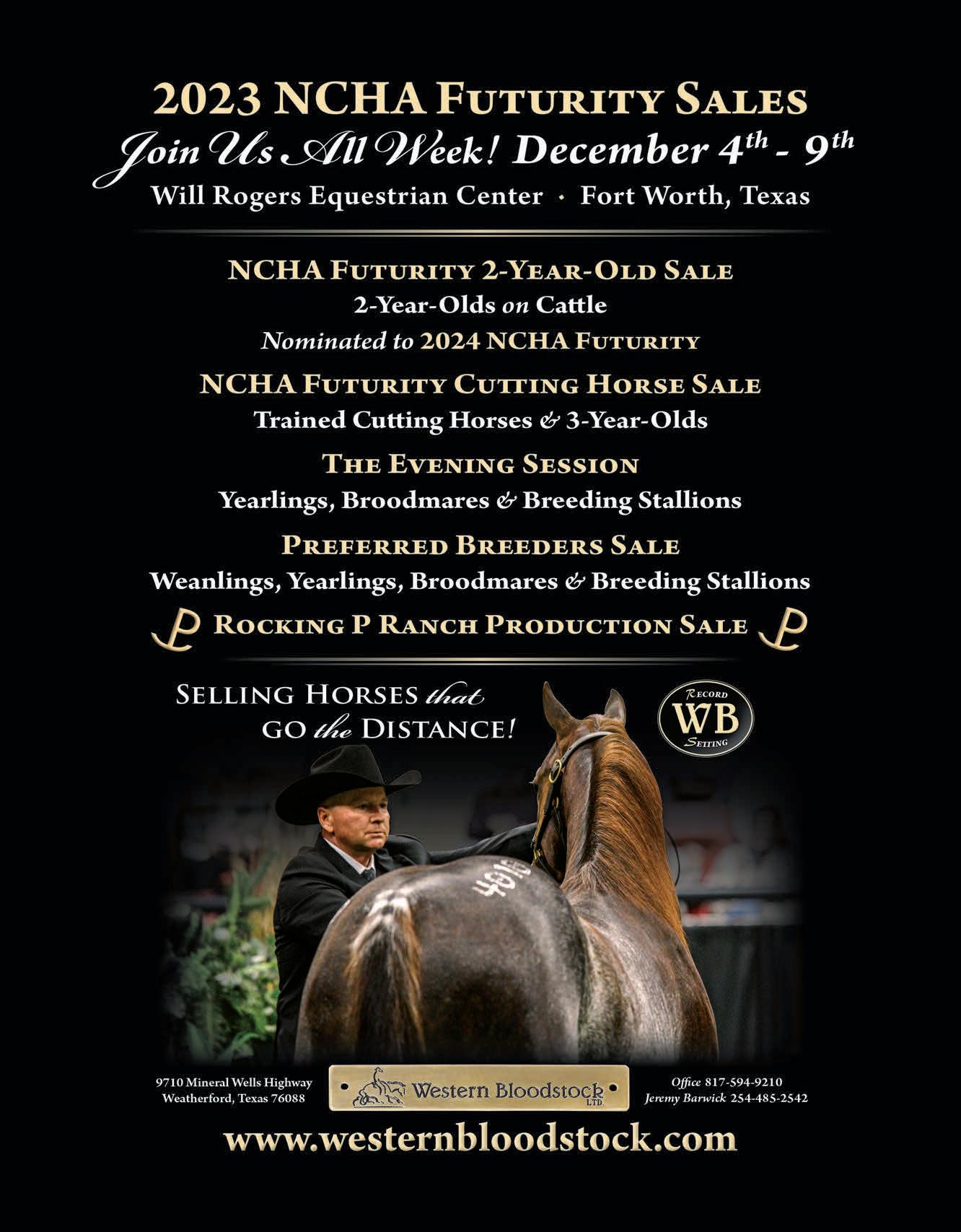


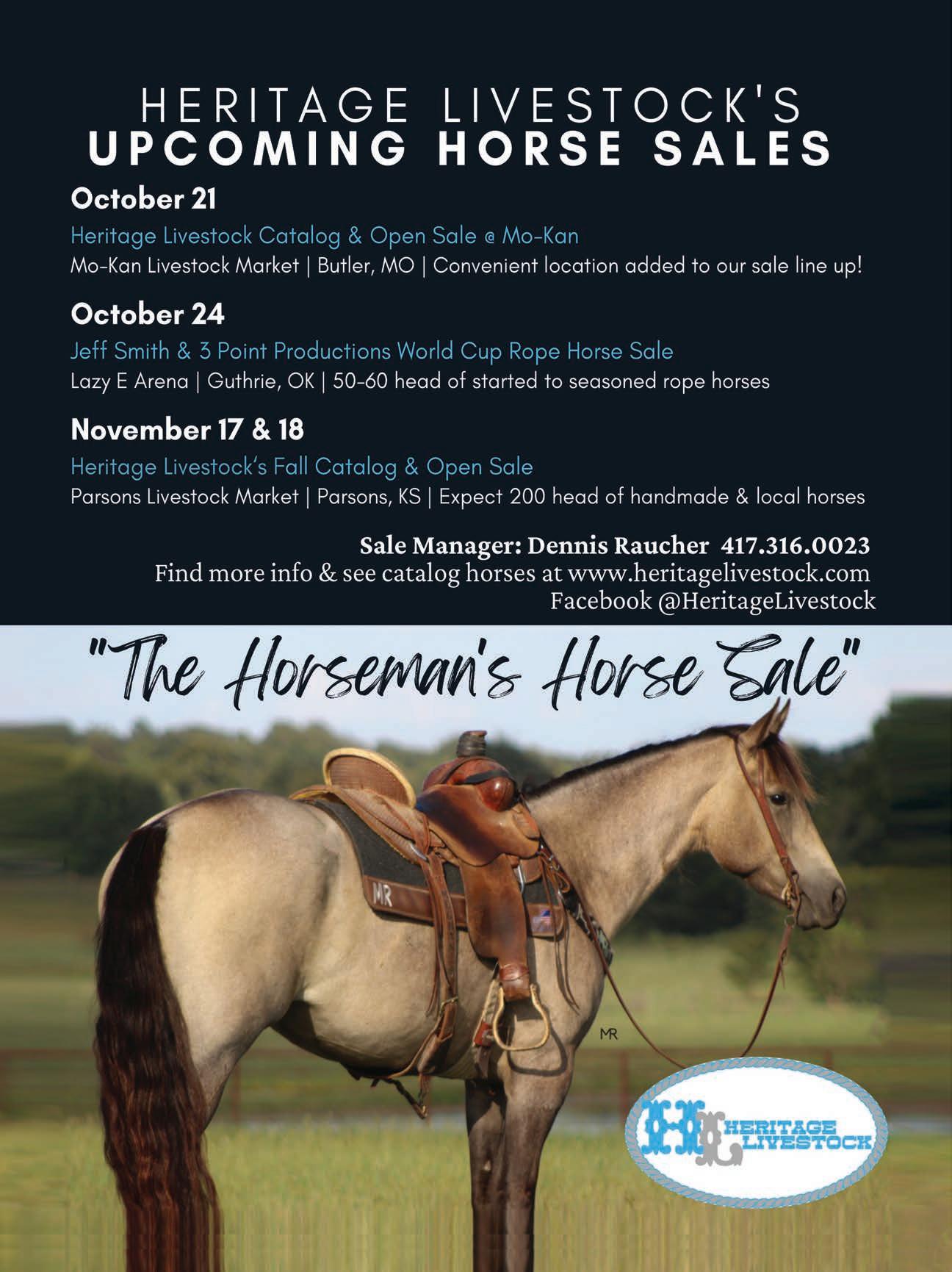
An ambition written down with a date becomes a goal, a goal broken down becomes a plan, and a plan backed by action willturnyourdreamsintoreality!ThisideafromauthorGreg Reidgavemeafreshperspective,andistheessenceofmy “Horse Goals or Bust!” roadmap to attain your goals.
To help get you started, I have worksheets, podcast episodes, andblogpoststhatguideyouthrougheachstepoftheprocess, plus two Facebook groups to guide you down the trail to yourhorsegoals.FindallofitatJulieGoodnight.com/HorseGoals.
After months or even years of setting goals, planning, training, practicing, and preparing, it’s finally time to put it all into action! Whether you’re going to a clinic, a competition, or another event, riding in unfamiliar situations can be challenging, and horses often act differently than they do at home.
After four decades as a horse trainer, I have learned many lessons along the way. Here are five important lessons to help you prepare, and make the most of the next event with your horse.
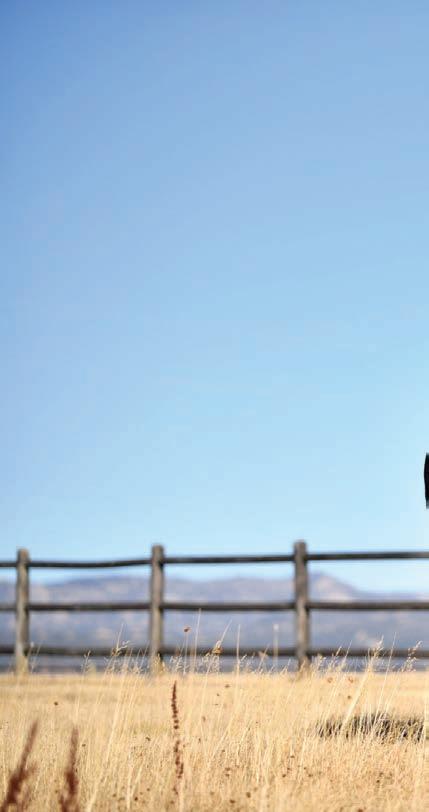
Often people are surprised that their horse is excited, nervous, or downright disobedient when they get to a new place or large event, because the horse never acts that way at home. Just because a horse is calm and confident at home— with familiar horses and people—does not mean that they will behave that way in an unfamiliar setting.
It’s important to remember that your horse is not the same every day, or in every situation. Managing your horse’s
energy, be it low or off-the-charts, often takes precedence over anything else.
Many factors, some outside your control, can affect the energy level or emotional state of your horse—and it can change quickly or build slowly. New places, unfamiliar horses, and unknown experiences can quickly lead to confusion and fear in your horse.
You need to first be aware of your horse’s changing emotional state, and then be able to adapt your energy level and how you are riding to the needs of the horse. Always ride proactively and with purpose.
It’s important to establish your leadership and expectations of the horse. Take the bull by the horns, so to speak. The “golden moments” are the first 5-10 minutes of your ride—the precedents you set about your tolerance of certain behaviors, your confidence level, leadership, consistency, and fairness.
I want the horse to immediately know that I will make all the decisions about where we go, how fast we get there, establish boundaries, and communicate my clear expectations. Setting these expectations will make a huge impact on the horse.
As soon as you start riding your horse, start asking him to do a string of simple tasks—go right, go left, go faster, go slower, stop, stand for a minute, etc. Just in asking the horse to do these actions, two things are happening:
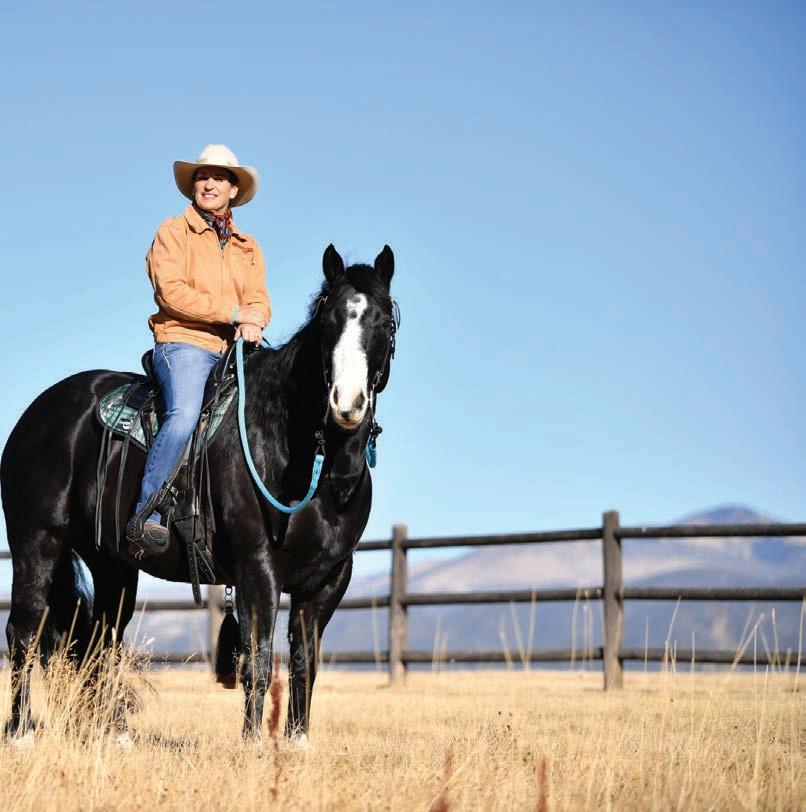
#1: You’re testing his compliance. You’re testing his willingness to go where you ask him to go, his level of responsiveness and how distracted he is.
#2: During this process, the horse is becoming more compliant. With each simple maneuver I ask for (without letting too much time pass in between), the horse will listen to me more, because he’s waiting for the next signal.
A lot of turning, stopping, changes of speed, and changes of direction are really important during the beginning of your ride. I might ask my horse to go somewhere he doesn’t really want to go, like through the mud puddle or up into the corners of the arena. That helps me establish that I am indeed the one that calls the shots, which is imperative in the show pen and on the trail.
Horses are very location-specific in what they learn and how they act. If your plans involve taking your horse off-site, and your horse lacks experience (also called seasoning), you should expect the horse to be unsettled and anxious.
In time, and after doing the skills he has learned in many different locations, the horse becomes so accustomed to being in new places that he will act the same way on the road as he does at home.
Some horses adapt faster than others, but this doesn’t happen overnight. It takes months and years of consistent training. If you and your horse are in a new situation, be sensitive to your horse’s changing emotionality.
Does the horse need more time to settle in? What are some easy things you can ask your horse to do that will help him calm down, listen and respond to you? Look for opportunities to remind the horse of what he knows (think ground manners), and for opportunities to praise the horse, stroke his neck, and lower his head.
Keep your expectations in line with your experience level and skill set, and be aware of your horse’s emotions. Don’t expect your horse to perform at his peak when he’s away from home for the first time or in a new place. As my father liked to say, with horses, you should always be ready for the worst-case-scenario. Better to be pleasantly surprised than grossly disappointed.
Arriving early and scouting locations ahead of time is rarely a bad idea, and almost certainly results in being better prepared. Things like stabling conditions, distance to parking/bathrooms/water/etc., what turnouts and arenas are accessible, and what equipment is needed and not needed are all good to know in advance.
Make a dry run if you can—especially if you are traveling with horses for the first time. Whatever activity you are embarking on, figure out a way to practice it, go through the motions, or do something similar. If that’s not possible, at the very least you should play out the entire scenario in your mind and make a cheat sheet.
If your main goal this summer is to slay the monster in your closet, to do the one thing you haven’t checked off your list yet, break it down into the smallest steps you can.
Here’s one example: You have a new horse, and although you’ve come a long way in building confidence in him, the thought of taking him on the trail for the
first time makes you anxious. You may have built it up to be bigger in your head than it is in reality. Break it down by walking the trail yourself, then taking the horse on the trail in-hand to see how he reacts. By then, you should feel less overwhelmed, and better prepared to accomplish the task.
Most people who know me think of me as a pretty confident person, and I am most of the time, but not all the time.
Fortunately, both my parents taught me to believe in myself, and to have courage and conviction. I’m not afraid to admit when I don’t know something, to try something I’ve never done before, or say “no” emphatically when I disagree. Still, there are times when my mind gets polluted with doubt.
No matter how confident or competent or talented you are, you will experience self-doubt at times. It’s a human condition.
I have learned to ride out those moments, to think through the stressors, and have faith that it will pass.
I know when I lay awake in the middle of the night, devolving in my thoughts, that once the sun comes up and sheds a little light on the subject, things will look different.
For me, a period of self-doubt is always followed by some sort of positive affirmation. In the worst moments of doubt, I remind myself that it happens to everyone, that there is a solution to every problem, and that something good is about to happen.
Whatever your undertaking is—be it a major horse show, a multi-day pack
trip, a single trail ride, a clinic, or moving forward after a confidence-shaking experience—it never hurts to slow down and breathe. Be present in the moment.
I remind myself of this when I am doing anything exciting, nerve-racking, or fun and I feel myself getting cranked up:
1. Slow down
2. Look around
3. Review the plan
4. Take a deep breath
5. Think before you act
Even if the situation calls for you to spring into action—let’s say in an emergency— taking a deep breath and slowing things down, and moving deliberately will certainly help.
As you approach your horse activities this summer, remind yourself to slow down and breathe. Assess your horse, the situation, and the plan. Then move ahead with awareness, intention, and determination.
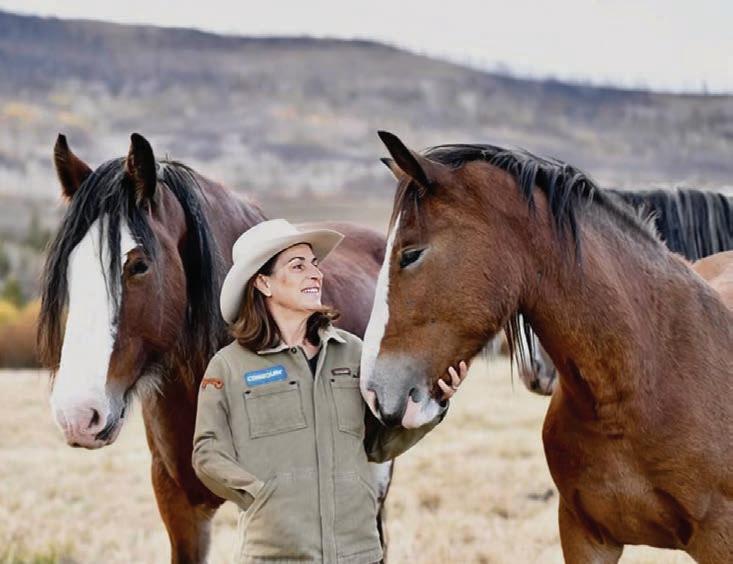
Start on your “Horse Goals or Bust!” roadmap today. Get everything you need—worksheets, podcast episodes, blog posts, and two supportive communities—to guide you through every step of the way at JulieGoodnight.com/ HorseGoals.
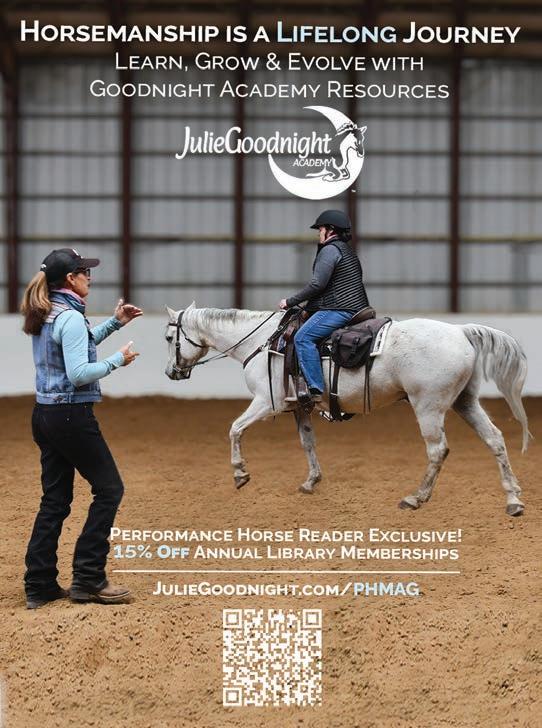

For some of us, October means the end of show season. For others, it means it is time for the big year-end champ shows. For some October is cooler, nicer riding weather, and the perfect time to enjoy spending time with your horse. For others, we are feeling the chill of fall and impending winter, so we are scrambling to get in rides on our horses before snow arrives.
I find October to be a great time to assess where my Horsemanship Journey has taken me this year. Have you achieved what you set out to achieve with your horse? If so, great! If not, take some time to examine why. Maybe there were some unavoidable obstacles, like your horse going lame (darn abscesses!). Maybe along the way you realized that whatever you thought you wanted wasn’t really what you thought it would be. Maybe you discovered something else. As you review your goals, don’t judge-just look objectively at what happened.
Then ask yourself how you truly feel about it.
If you achieved your goals, how do you feel? Are you feeling inspired to keep on going, to set higher goals for next year? Or do you feel a sense of relief that it is over?
If you didn’t achieve your goals, look deep inside, and ask if you still want to go after those goals? What are your feelings about where you are right now in your horsemanship journey?
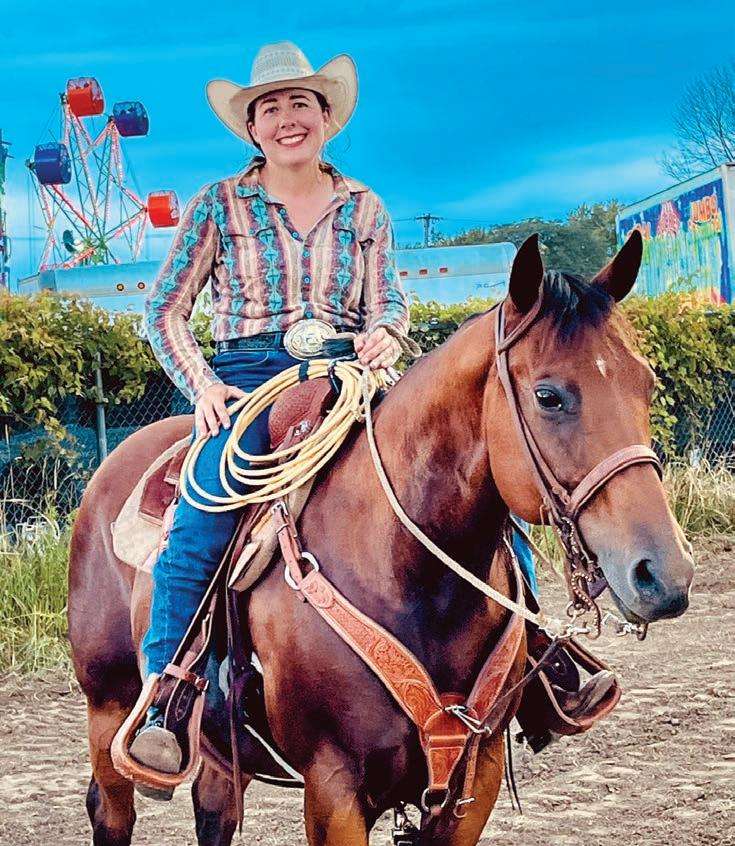
Are you motivated to keep going? Do you feel that your goals are still what you want to go for, and something that you have belief in yourself and your horse that you can achieve, if you put forth the effort?
If your goals are still something that you want to go for, then examine the steps that you need to take to get there. Is the path to your goals possible and practical? Are they realistic goals?
Are there other activities with your horse that you want to try? October
is still plenty of time to go after your horsemanship dreams! Sometimes along our journey we discover that the path we are on is not the path that we thought we wanted. It is ok to pivot and try a new trail. Who knows-that new path less traveled might make all the difference for your horsemanship-and life-journey!
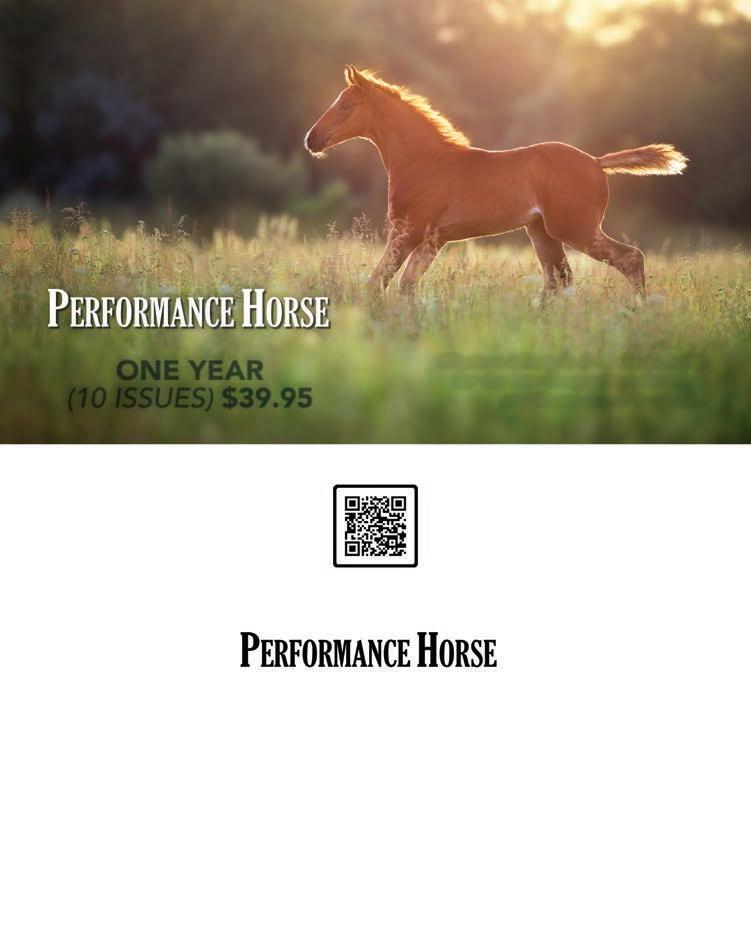 Get Gritty, Chevy Allen
Cowgirl Mindset & Confidence Coach
Get Gritty, Chevy Allen
Cowgirl Mindset & Confidence Coach
 www.getgrittycowgirl.com
www.getgrittycowgirl.com



Siobhan “Chevy” Allen is lifelong horsewoman, mama to two little cowboys, and farm wife. She understands that horses aren’t just a hobby-it is a lifestyle! She enjoys helping riders apply positive psychology techniques to enjoy their horsemanship journey and achieve their dreams. To learn more about Chevy and how you can “Get Gritty”, visit www.getgrittywithchevy. com.
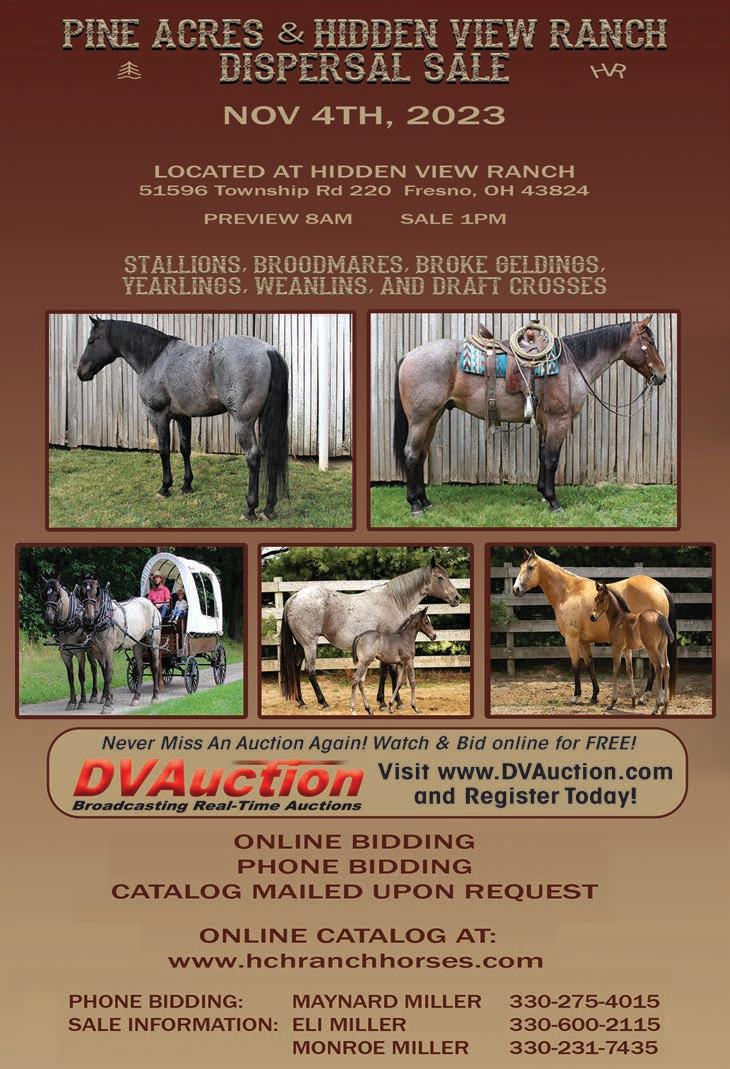
Horse shows are great venues to display what you or your ranch has been focusing on. It is an opportunity to show your breeding and training programs along with riding skills. These events tend to draw like-minded people together and they often are the only people that you associate with. Horse shows can also be stressful and cause a person to look deep inside of themselves in search of answers to how to become more competitive. Most people feel stretched by the showing experience, and are continually challenged to improve their skills. It is either that or choose a different playground all together such as golf, tractor pulling or pickle ball that does not involve a horse.
I would like to do my best to talk to you for a minute as to how different the experience that Mustang competitions are. The popularity of wild horse shows across
America continues to hold steady.
My personal experience of competing in them since 2008 and having the honor to judge them, has had a strong influence on me both personal and professionally. The pure fact of taking an untouched feral horse and transforming it into a polished show horse in a 3-month period, really stretches even the most seasoned horse trainer.
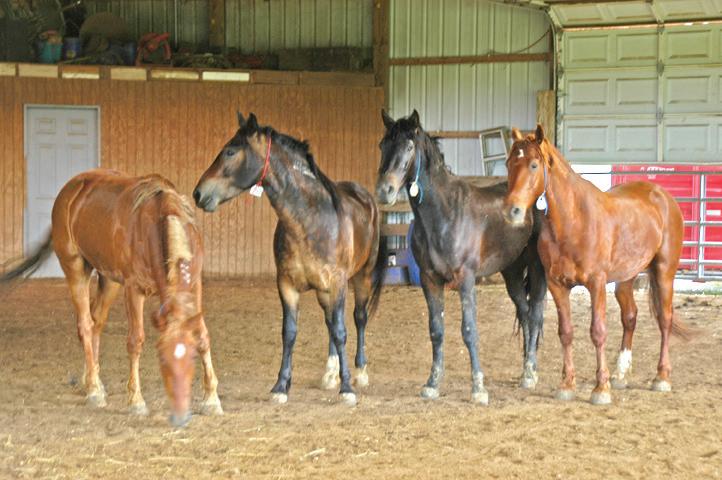
I wholehearted believe that it is the purity of a level playing field, which makes these shows unique in their own way!!
You cannot breed or buy a better horse. You compete on the horse you have now. Your equipment is not judged. The horses are not really being judged on looks or athletic ability. The only thing that is on display at these shows is pure and
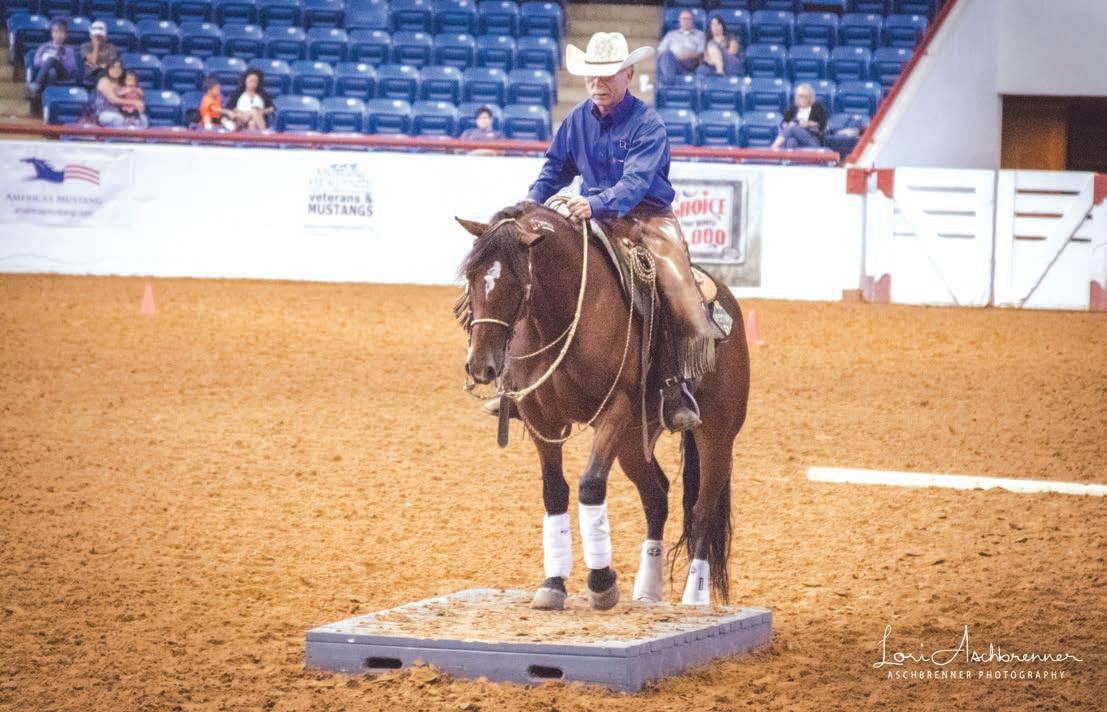
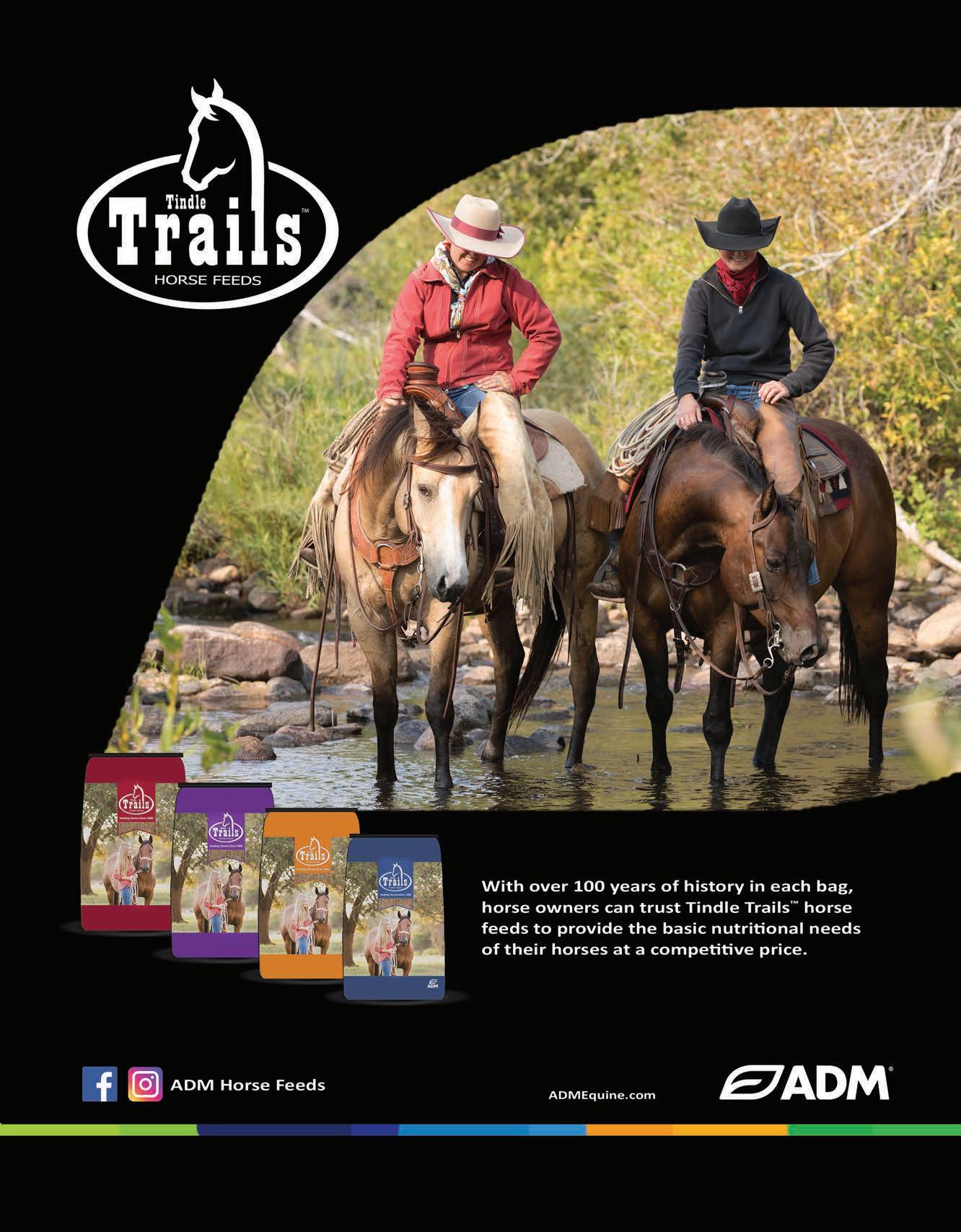
simply the ability of a person to communicate with a horse that would rather be wild and free, than to perform in front of huge crowds while they are scared for their own safety. Pedigrees do not matter, show record does not matter, and in fact nothing matters to the horse except the security of his trusted 2-legged companion, that he has now bonded at the heart with during their time together.
I have not met a person yet that has stepped up to the challenge of putting their skills on display, that would not tell you that the fleeting time they have spent preparing for this one-of-a-kind show, has not changed their lives deeply for the better!
The unique set of obstacles that each person and their horse must overcome to even get to the show make up the true wealth of the experience!
I also believe we can all relate to the mustangs themselves. We like they, have ancestors that formed this country as we know it, as this great land was homesteaded and developed into our American history. These wild horses played just as a big of role in our historic past as we did. This plus our strong instinctual desire to be free and left to live our lives as free roaming citizens of this great country, make up the reasons that separate the Mustang shows into a category unique to them and to us.
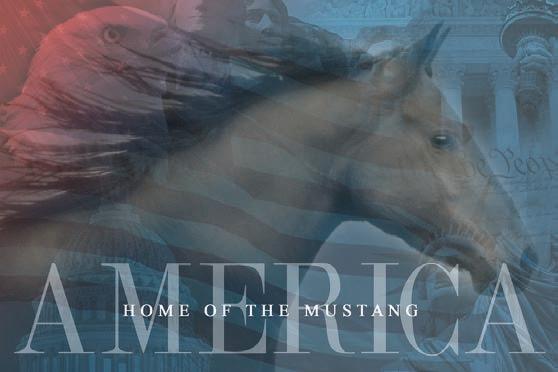
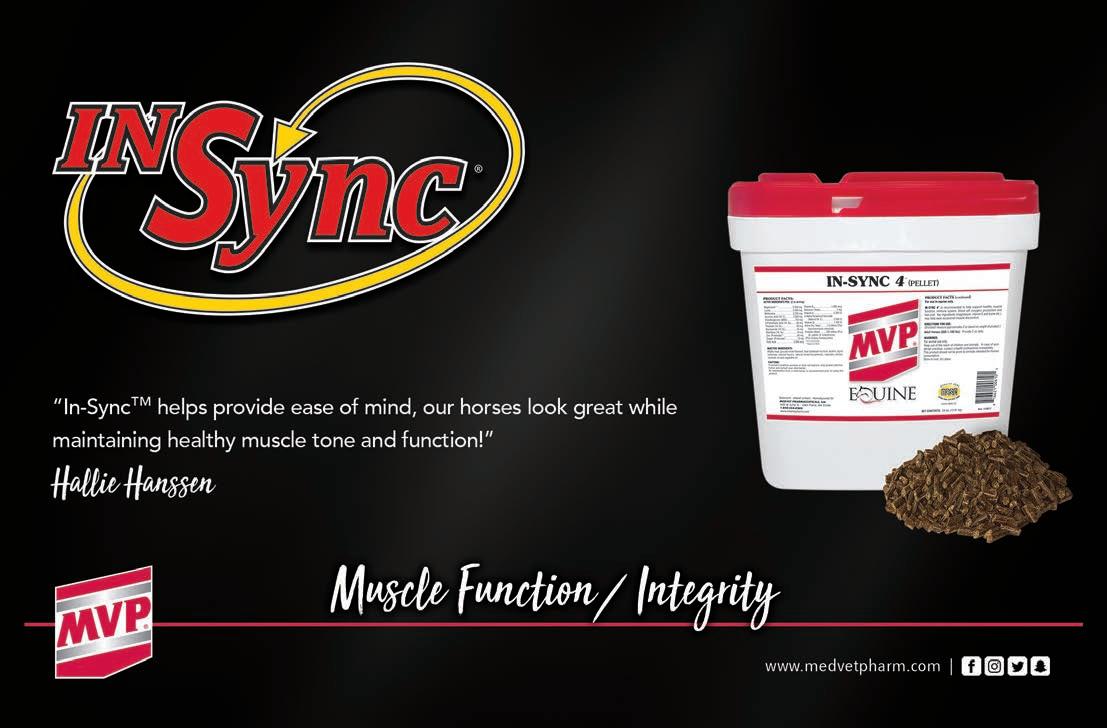
Dennis Cappel, Master Horseman
Dennis Cappel’s original quote sums it all up. “What’s on the inside of a man shows up on the outside of his horse”. Dennis’ love for a good functional horse has been demonstrated through championships and titles in several Colt Starting, Ranch Versatility, Cutting, Roping and Extreme Mustang Makeovers arenas. Training and Shoeing professionally for all disciples since the early 80’s he has mastered the art of reading a horse that allows him to achieve 100% positive results. Through his teachings Dennis bridges the gap for horse and rider to reach a mutual respect, trust and confident relationship together using what he calls a Clear Mental Picture. Connect with Dennis through www. cappelhorsemanship.com , Cappel Horsemanship FB group or dennis@ cappelandcappel.com. He will be glad to hear from you.
EXCELLENCE!
PROUDLY PRODUCING SOME OF THE BEST COW HORSE GENETICS IN THE NORTHWEST
Breeding “Cow Horses with Cow Sense” STANDING SIRES:
Smooth Bye Design - LTE $93,000 + NCHA

Sweetshot Playgun - Open Performance OM Heading Pts in Heeling & Barrels Foundation Sires:
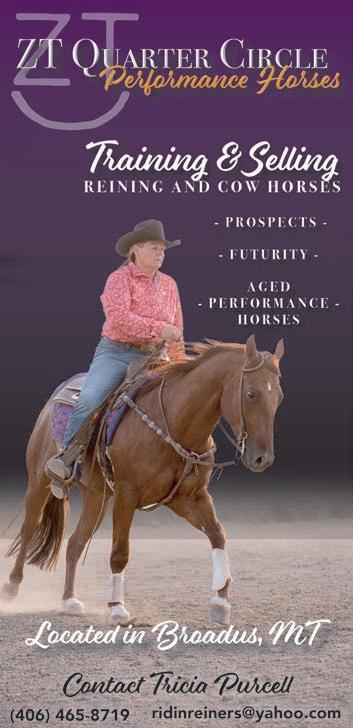
Boonsmals Kandy Man by Peptoboonsmal LTE $27,400
Smooth As a Cat and Playgun
osrfyi2011@gmail.com
856 Tony Creek Rd. Melville, Montana 59055
406-537-2333 Ranch Of ce

OpenSpearRanchStallionStation.com openspearranch.com
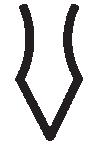

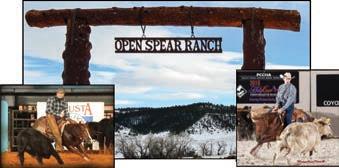
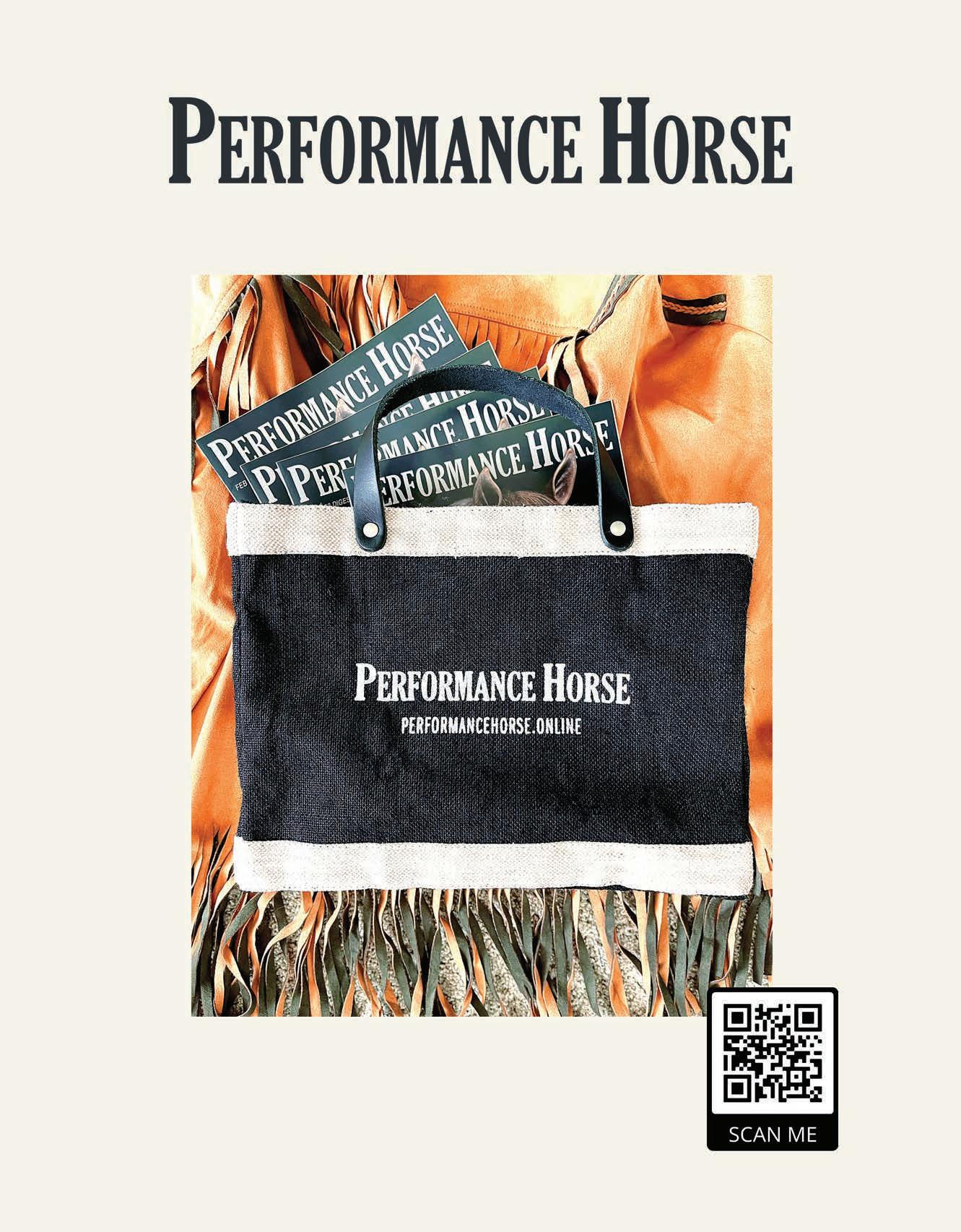

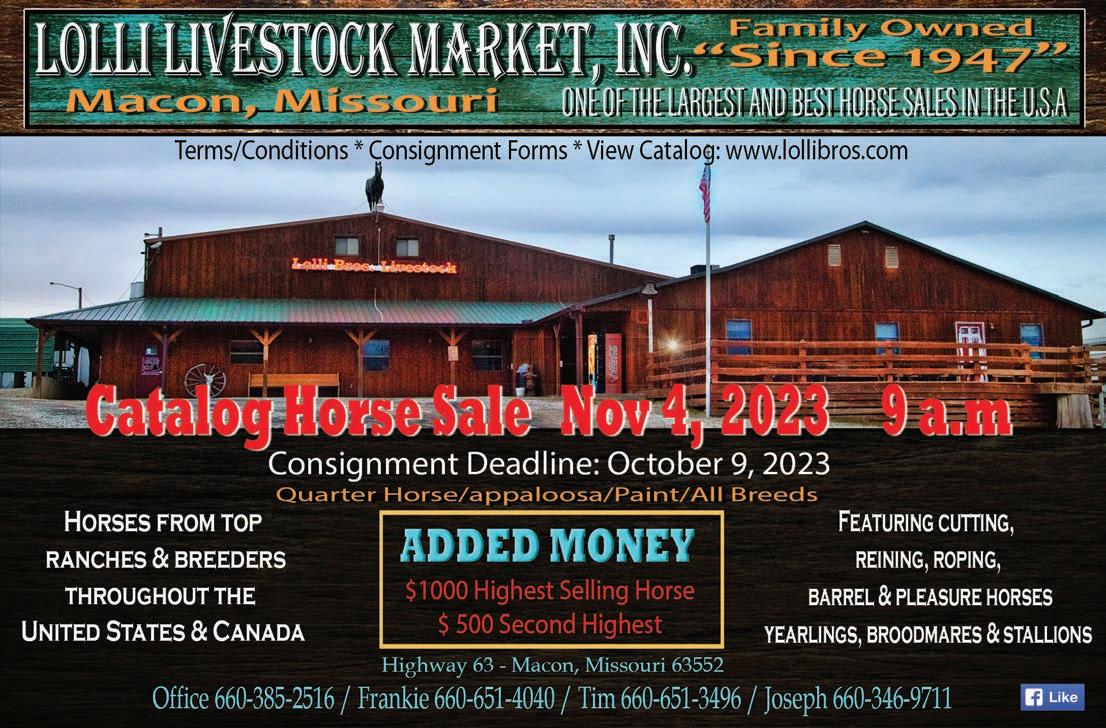
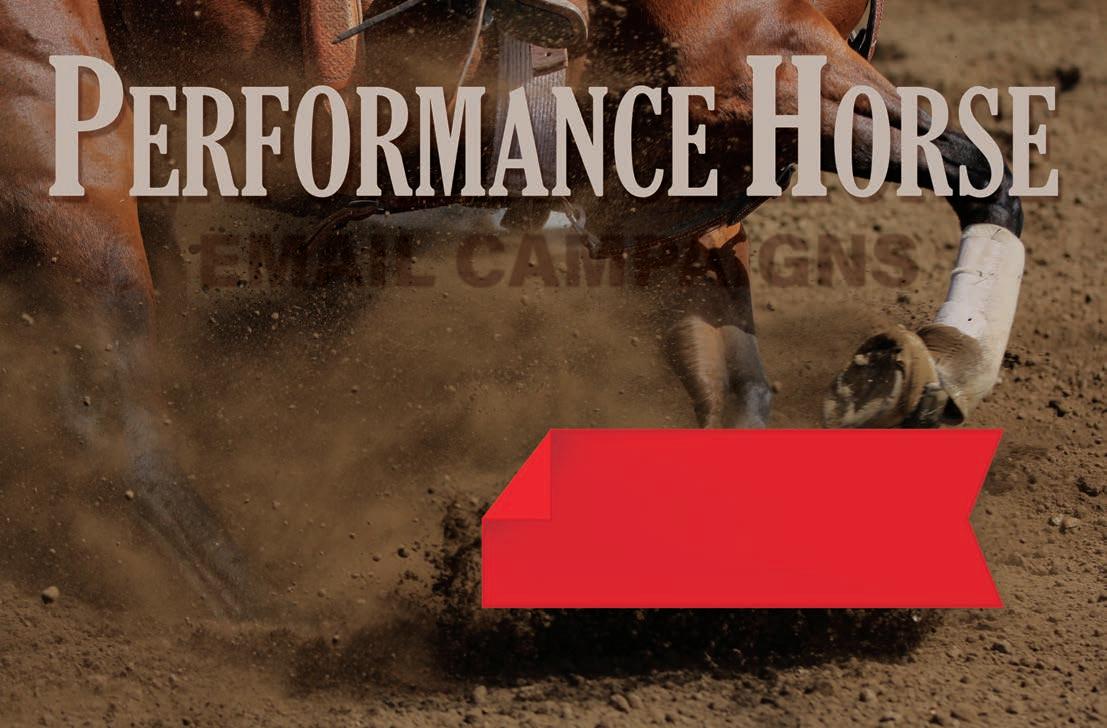
Are you passionate about becoming a true partner with your horse? I know I am, and I’m here to help you achieve that goal. Training for Western Dressage will help with any western discipline with or without cattle!
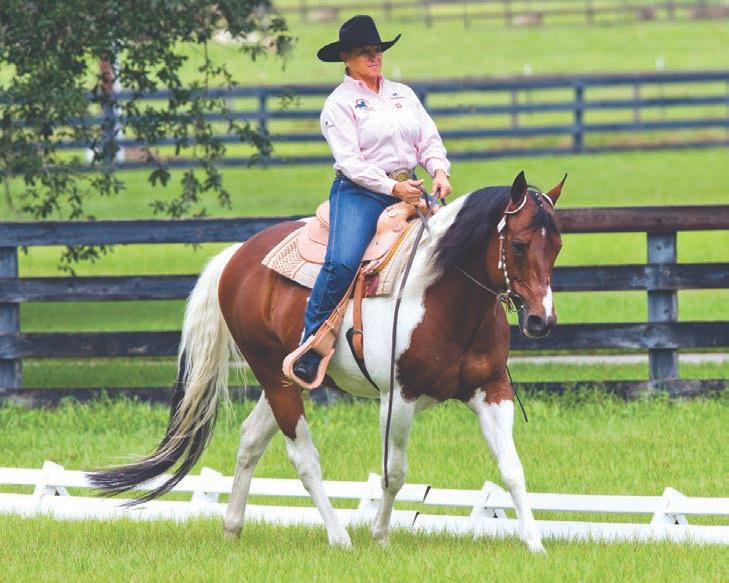
For this next series on training, you’ll be your own trainer for 80 to 90 percent of the time. You will learn to find those remarkable feelings when both you and
your horse come into balance, regardless of discipline. Being in the Dressage Court (arena) will help you attain that balance. We all want those feelings with a horse, regardless of what saddle you’re riding or what breed of horse you swing a leg over. We all dream of moments of being in synchronization with our horses. These moments keep us hungry to learn more and achieve more difficult tasks with our horses. Remember, this Western Dressage disci -
pline will steal your heart and create a passion for riding in harmony with your horse. Remember, too, that dressage is simply the foundation to ride correctly, and for the horse to be confident and willing with whatever performance you choose!
I’m looking forward to the next several months, when I’ll share tips and guidelines for understanding the simplicity of learning (in written format, at least) Western Dressage training from Introductory Level to Level 5. Could be the start of my new book…..!
All the levels in Western Dressage are a systematic, progressive training that produce a horse that is physically strong, balanced, supple, and flexible. This equine athlete also demonstrates a calm, confident, attentive attitude and is willing to do their job — whether performance in the show ring or a safe weekend trail ride.
Tests provide an introduction to the discipline of Western Dressage wherein the horse performs only at the walk and jog. The rider should demonstrate correct basic position, use of basic aids, and understanding of the test figures. The horse should show relaxation, and
harmony between horse and rider is essential. The horse accepts the aids and influence of the rider. The jog should be a natural gait within the horse’s scope and should demonstrate a swinging back.

Working Walk — Four-beat, active, energetic walk with resolutely forward reaching steps. This horse has a confident stretch to the bit. His head and neck should swing naturally as a result of a relaxed back and shoulder/front legs alignment to the hip/hind legs. The horse’s hind feet should touch the ground into or beyond the prints of the forefeet.
Free Walk — A relaxed walk with unconstrained, forward reaching steps where hind feet touch the ground clearly in front of the footprints of the forefeet. The horse must be relaxed and be allowed through a loose (no contact) of the mouth, the freedom to lower his head and neck to stretch forward and down and out with the nose. The length of stride, rhythm, the relaxation and swing through the back of the horse is of great importance. The stretch of the horse is very important to allow the body to lengthen and stretch the top line muscles. The stretch also allows reaching of the hind limb joints to develop the strength and flexibility to compact his body for future direction and requirements and for developing collection.
Working Jog — An energetic, regular, two-beat jog. The horse must go forward with even and elastic steps. The hind legs step actively up under the horse with obvious push from the hindquarters as demonstrated from a relaxed top line – thus a swinging back, and reaching for the bit with freedom in the shoulder movement. The horse must be in proper balance and maintain a light contact with the bit. The horse’s nose must be on or slightly in front of the vertical. In Introductory and Basic Tests, the Working Jog may be ridden either posting or sitting.
Halt — At the halt the horse should stand attentive, engaged, motionless,
straight and “square.” Square means the horse’s legs are square with the weight evenly distributed over all four legs. The neck should be raised with the poll as the highest point and the head slightly
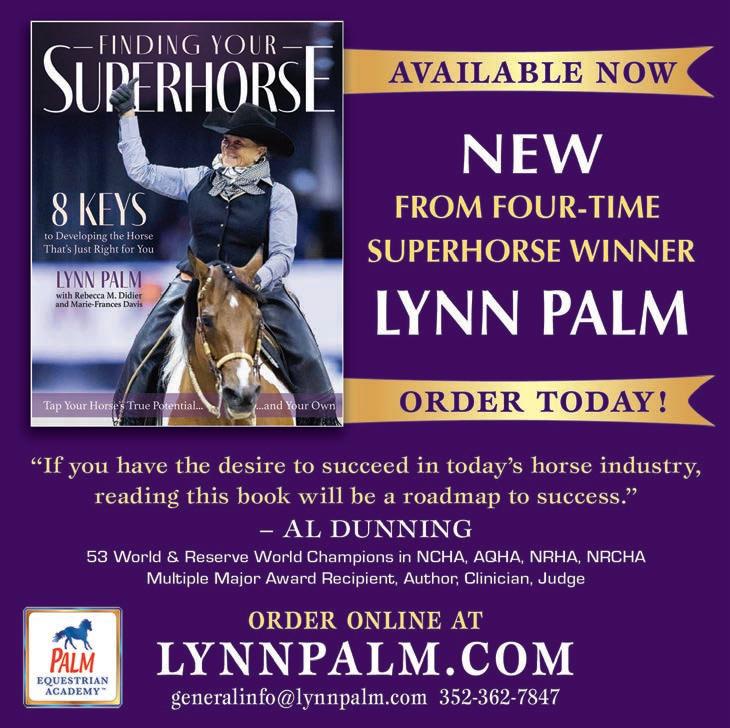
hands. The horse may “mouth” the bit during the halt, but should be ready to move off at the slightest indications of the rider.
For the halt at the beginning and ending of a test, a horse should be immobile at least 3 seconds. In Introductory l Levels, a halt should be at least 4 seconds.
20 meters X 40 meters is most popular. 20 meters X 60 meters can also be used.
Learn sizes of figures by doing the geometry.
Learn the “math” of the Dressage Court (arena) by walking it on foot to find the distances that the figures call for in each test.
This is really a fun challenge — riding your figures to an exact size or path! Riding with accuracy will teach whether you are doing something correct, or you need to improve on this task. Riding with precision will always help you recognize how your horse understands your communications (aids). The goal is that no one can see you “talking” to your horse! Light and invisible aids is the aim.
First learn how to ride the rectangle arena. The long side of the arena is 40 or 60 meters in length. Then there are two short sides of 20 meters in either official arena size. Not only can either arena feel small or difficult to ride along the rail (tangent to the rail — 1 meter is 3.3 feet from the rail) you also have four corners to learn to ride! In the corners you must show that your horse is bend -
ing correctly in order to be balanced, as well as going straight after and before each corner. Start with learning this.
Training Tips: Make your own arena! It’s simple and inexpensive. Set it up in your arena or pasture, but please make sure you have as level and as good a footing as possible.
I know you will not regret these arena boundaries for learning how much fun it is to ride with accuracy and precision!
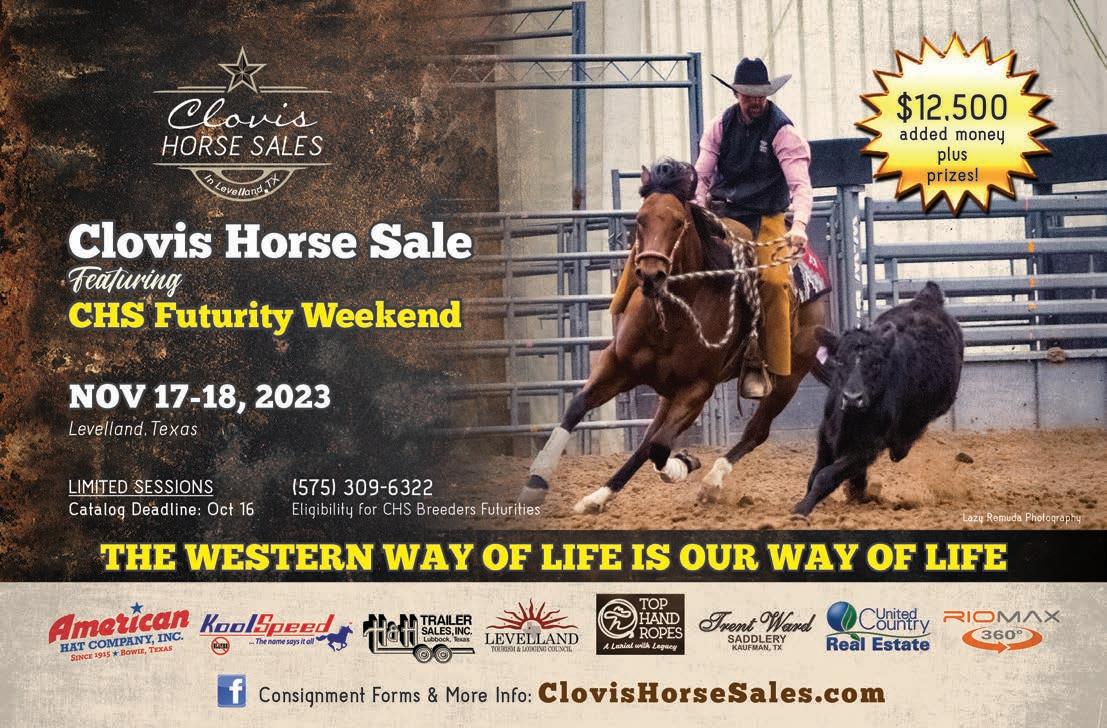
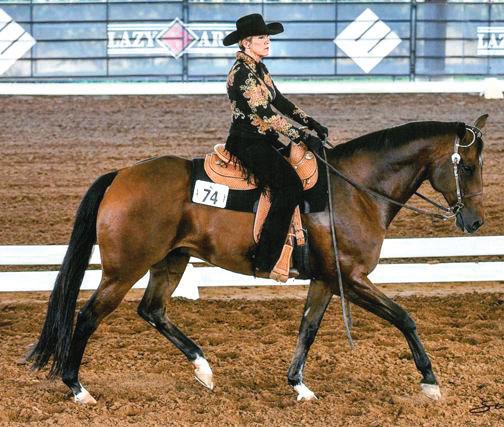
Palm Equestrian Academy generalinfo@lynnpalm.com 352-362-7847
Cyril and Lynn offer clinics throughout the country and abroad as well as online coaching. Join them on their teaching tours or their Palm Equestrian Academy European Journeys.

Rural Media Group, Inc. is the world’s leading provider of multimedia content dedicated to the rural and Western lifestyle. With a mission of reconnecting “city with country,” RMG is the parent company of RFD-TV with over 52 million homes, Rural Radio Channel 147 on Sirius XM Radio with 33 million units, The Cowboy Channel with 42 million homes, and the Cowgirl Channel. Corporate headquarters are in Omaha, Nebraska; broadcast operations are in Nashville, Tennessee for RFD-TV and Rural Radio Channel 147 on Serius XM Radi, and in Fort Worth, Texas Stockyards for the Cowboy Channel and the Cowgirl Channel.
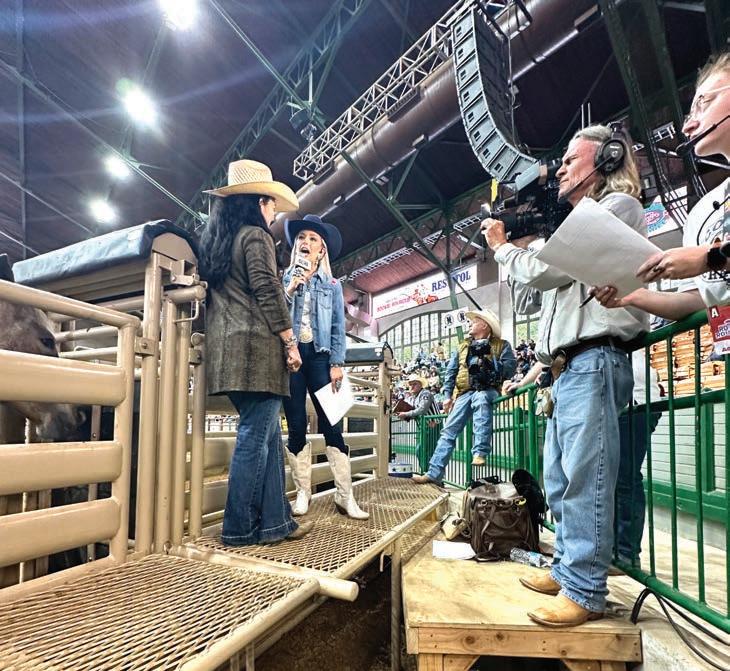
Launched in December of 2000, RFDTV is the nation’s first 24-hour television network featuring programming focused
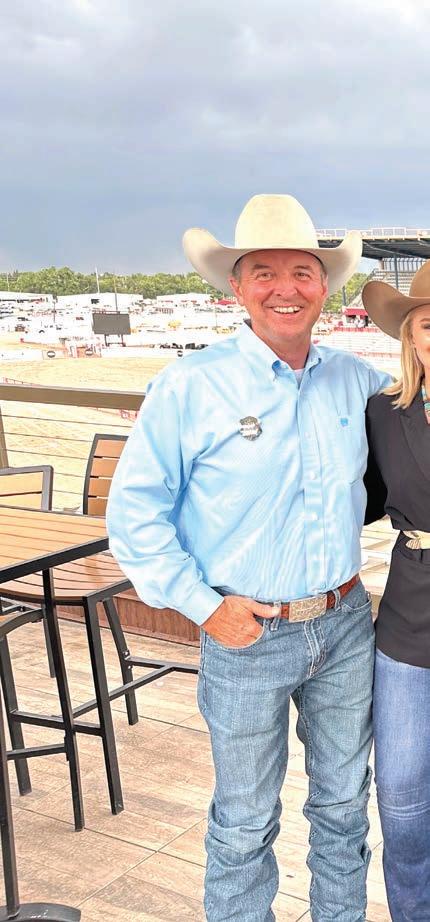
on the agribusiness, equine and the rural lifestyles, along with traditional country music and entertainment. As a former FFA member and Lone Star Farmer I really appreciate the FFA Today on RFD, a fun
fast-paced show featuring stories about amazing kids and unique agriculture industries. With more than half a million FFA members across the nation, there are many stories to tell.
The Cowboy Channel is the official network of Pro Rodeo and the first 24-hour television network totally dedicated to western sports and the western lifestyle. Headquartered in the Fort Worth Stockyards. The Cowboy Channel features content focused on Pro Rodeo, bull riding, roping, reining, barrel racing, and other western sports genres, along with western fashions and music. The lineup also features a wide variety of “live” coverage from major western events showcasing the world’s toughest and most talented cowboys and cowgirls. The network enjoys distribution into 42 million homes.
The in-studio side of 100 Rodeos in 100 Days truly requires a village, & a dedicated one at that. Typically for a WSR & Pro Rodeo Live (multiple rodeos at once), they will staff seven technicians each and six technicians for all PRCA Rodeos. This doesn’t include a producer, editor, engineer, on air talent & digital team. That is just for one show! Take those times 100 days, 142 rodeos & 427 rodeo performances. To do that it takes a huge team and a few that come to mind is Jaime Ramirez, Broadcast Operations Manager & Karlee Peterson, Executive Producer.
According to Megan Browning, Director of Operations & Karlee Peterson, Executive Producer, the Cowboy Channel was founded in 2017. The Cowboy Channel will have their talent at around 50 rodeos, with an average of 5 travel days on the road that turns out to be over 250 days.
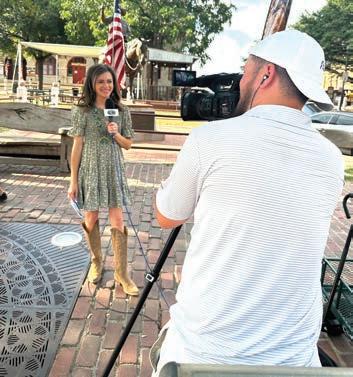
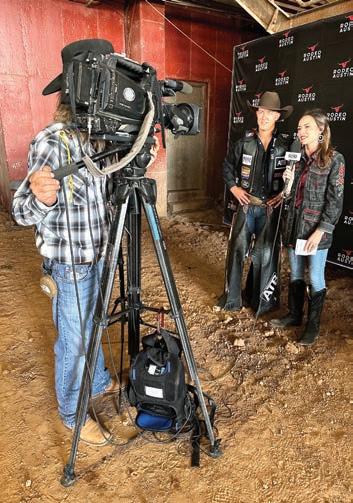
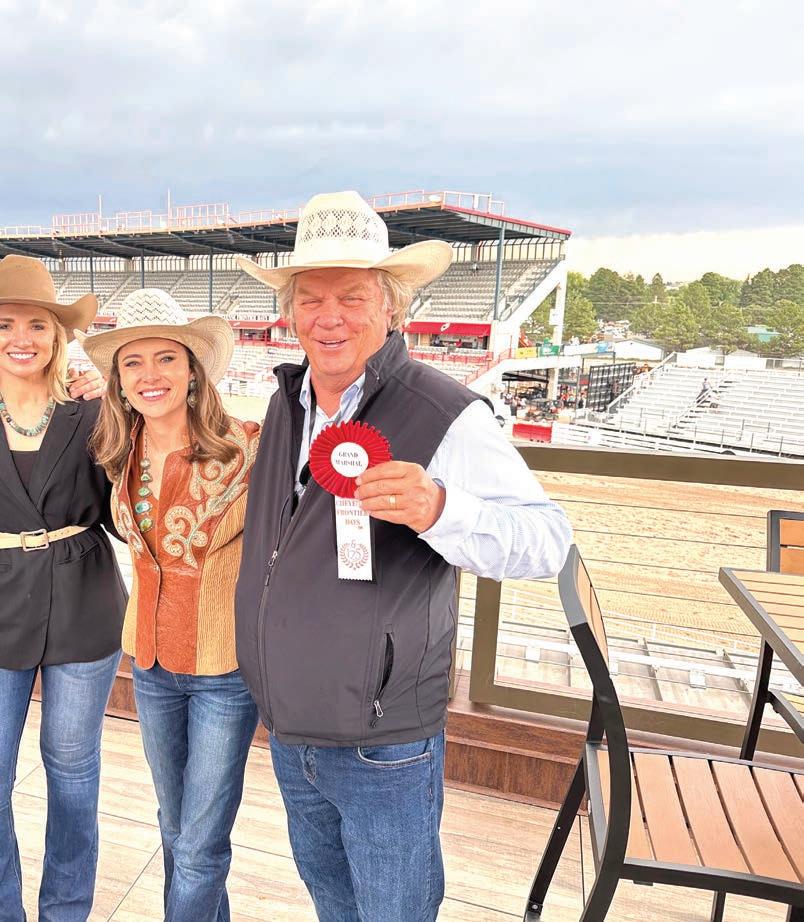
Tyker Hays, who is in Development, said at the busiest times the network has out about 35 plus transmission devices out to rodeos/events around the country and Canada. The team, during the busy times, will monitor around 20 plus rodeo/events transmissions simultaneously. It usually takes an editor anywhere from 3-6 hours to edit one performance. Combine this with the time it takes to ingest, deliver, and prepare for programming, the network generally schedules out anywhere from
Continued on page 34 >
24-48 hours before a rodeo turn is ready to air.
“In most cases The Cowboy Channel is working with rodeos several months in advance”, said Ciara Jenschke, Director of Rodeo Relations. “In some cases, their connecting with them days before the first performance, usually that’s the case if it’s a rodeo they have covered for several years.”
Recently one of the busiest days for Cowboy Channel was on a Saturday June 24th. They covered 20 different events/rodeos across the USA and Canada!
One of the most popular shows on Cowboy Channel is Western Sports Round-Up that will keep you up to date with the latest news and in-depth analysis of barrel racing, cutting, reining, team roping and more - along with complete previews of the nation’s biggest events. The show is filmed in the ultra modern Cowboy Channel Studios the former home of the
Cowtown Stockyards auction barn. With incredible detail they transformed the action barn into one of the most modern studios in the country.
The Cowgirl Channel was launched in 2023. For a realistically new network the viewership is taking off. The channel is dedicated to women in western sports and the modern-day cowgirl. The Cowgirl Channel serves as the sister network to the Cowboy Channel, the official network of ProRodeo, and in addition to programming designed around the interests of cowgirls, also provides Rural Media Group the opportunity to program more professional rodeo and western sporting events. Together, The Cowboy Channel and The Cowgirl Channel are the foundation for Rural Media Group’s effort to revolutionize western sports and invest in the future of the western lifestyle.
Here is the digital info, from Brett Nierengarten, Editor in Chief
• The Cowboy Channel social channels will get about 150 million total impressions across all platforms during 100 Rodeos in 100 Days, or about 1.5 million a day.
• In June and July, we have done more Facebook video views and interactions than mainstream sports networks like the MLB Network, Golf Channel, Big Ten Network and NHL Network.
• The social team will post more than 2,000 highlights, interviews, updates, recaps and more to our social channels and website during 100 Rodeos in 100Days.
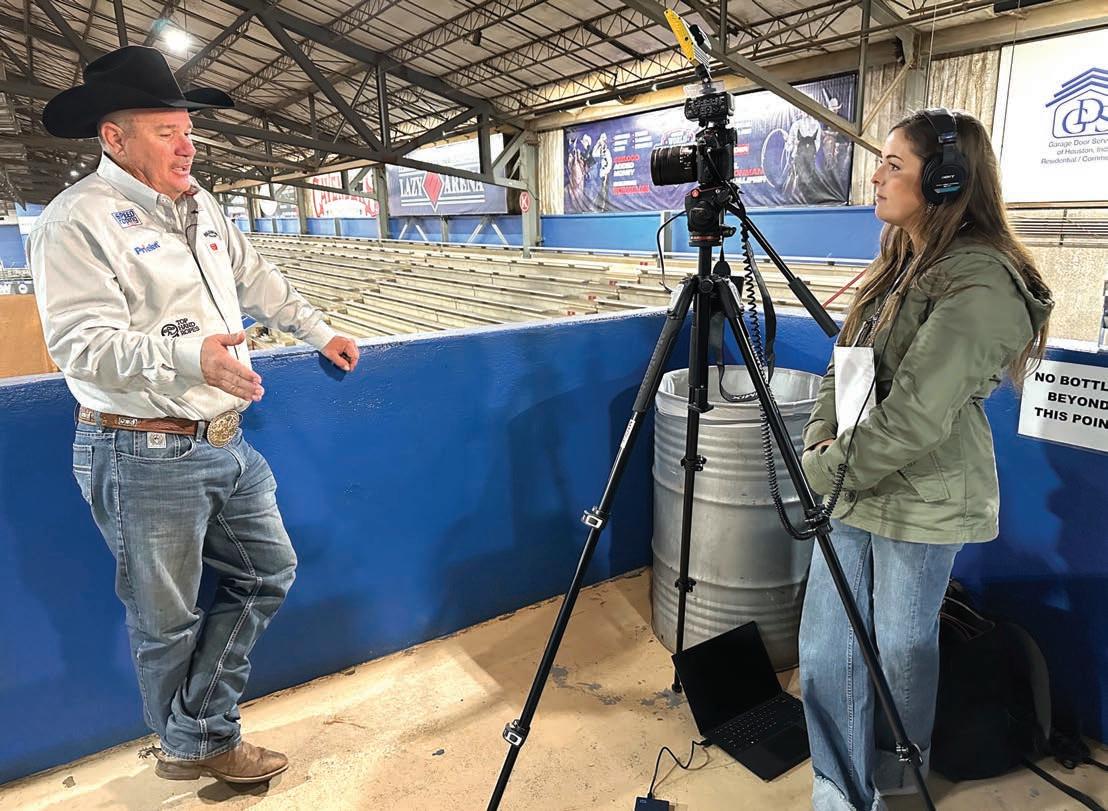
• We will see 150,000 and 200,000 new users on our website in June, July, August and September.
• Each of our five main social sponsors are expected to see more than 10 million impressions for their brand (Exmark, Thor’s Skyr, Pro Hats, Vetericyn, Resistol)
• The Cowboy Channel has 1.2 million followers across all platforms (Facebook, Instagram, Twitter, YouTube, Tik Tok) “Our numbers continue to show what loyal viewers we have and our Cowboy
Channel team is equally dedicated to them. 100 Rodeos in 100 Days is a monumental undertaking & our team is all in. Our crew amazes me daily and I hold high respect for the sacrifices & effort
they make to deliver the most live rodeo and western content as possible,” said Karlee Peterson.
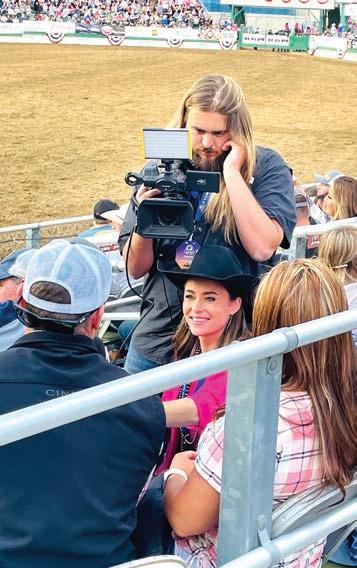
Scott Knudsen
www.cowboyentrepreneur.com
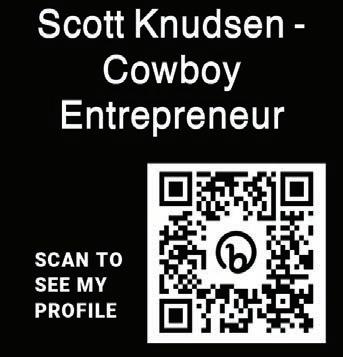
Scott Knudsen is a 5th generation Texas cowboy and lightning strike survivor. As host of Cowboy Entrepreneur®, an upbeat lifestyle magazine show at the crossroads of horses and business, Scott takes viewers behind the scenes with Olympians to filmmakers, rodeo stars to toy makers, even photographers

in hip wader boots—sharing the inspiration of lives touched by horses and the power of positivity. Headquartered at his Lightning K Ranch in Fredericksburg, Texas, Scott is an American Quarter Horse Association (AQHA) Professional Horseman and Ambassador. Cowboy Entrepreneur® airs weekly on Southern California’s NBC affiliate KCAA radio, Spotify, Stitcher,YouTube,Apple, and on multiple video platforms.
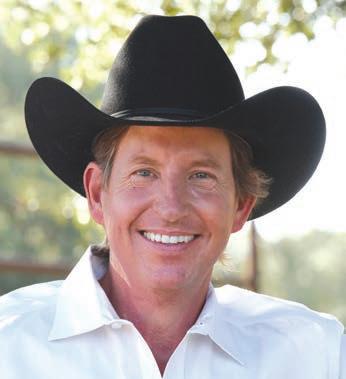

The snaffle bit is a training bit, but you could ride a horse in it for his entire life. Sometimes there isn’t a reason to change. But sometimes you want a little more respect, understanding, response or performance. And, if you’re showing, often an association dictates the type of bit you use on a horse in a given class or when a horse is a certain age.
If you have a truly broke horse, you should be able to ride him in anything—a snaffle, a spade bit, a hackamore, a shoestring, or even with no bridle at all. That is horsemanship. You’re not relying on a bit alone to communicate with your horse. You’re relying on your horsemanship—the horse, the man or woman, and the relationship you have built. Great horsemen communicate not only physically, but also mentally and emotionally.
It takes time to make a great horse. The old California vaquero, famous for making wonderful bridle horses that lasted, wasn’t ever in a rush. An old saying for the vaquero was that if his horse didn’t get something today, ma-nana—there is always tomorrow. Today, we tend to get in a hurry because we’re trying to get horses ready for futurities or competitions. The horses don’t care about futurities, or about time. In my opinion, we should work each horse at the pace he goes. There are fast learners and slow learners. A lot of people quit on the slow learners because they think the horses are stupid and incapable of falling behind.
But you know what? I wasn’t that great in school. I was a slow starter, but I was a good finisher, and always ended up in the winner’s circle. I remember teachers who weren’t very patient with me. I could have learned better at my own pace, with encouragement and patience from my teachers.
Correction is good, but encouragement is better. We need to look at horses the same way—as students and as individuals. We love competition, love to win, and understand how the futurity game is played. But the horses think differently than we do and we need to give them time.
Look at each horse as a true individual, and don’t get in a rush. Work with the

horse, not against him. Listen to the horse. He tells you where he is good, where he is bad, and where he needs the help. Remember, the horse is really the best teacher when it comes to horsemanship.
When introducing a new bit to a horse, it’s always good to give him a little time to get used to it. I might just let the horse stand tied wearing that new bit, and let him feel it, taste it and get used to it. One important note: I never tie a horse with the reins; I always tie him with the halter, mecate or get-down rope. If I tie with the reins and a horse sets back, he can severely injure his mouth—the mouth I’ve been trying to develop from day one.
When I’m ready to ride that horse in a new bit, I always start at a walk. A lot of people miss out on that, but a horse needs to get used to the feel of that bit, and he can learn a lot at a walk. At a walk, I have total control. As I walk, I’m going to flex the horse right and left and soften him at the poll. At this slow pace, he can learn to adjust to and accept the feel of this new bit.
It’s common for people to flex their horses at a standstill, and that’s a good start, but you also must be able to do that while the horse’s feet are moving. While introducing the new bit, you can take the horse through the basics and fundamentals that you’ve established throughout his training.
Practice being light with your hands and legs, and make sure the horse is responding positively to this new bit before adding any more speed. Remember: Riding is all about control.
If you can do these exercises at a walk, you’re ready for the trot. When your horse is solid at the trot, you’re ready for the canter. Introducing the bit in this way is part of “riding smart.”
A Native Texan Craig Cameron, one A Native Texan Craig Cameron, one of the original clinicians, is on the road more than 44 weeks a year covering 80,000 miles demonstrating the style of horsemanship he has perfected in the last 23 years. Called the “public defender of the horse,” Craig dedicates himself to those who educate their horses by first educating themselves. At an age where most have long since retired the thought of starting colts, Craig Cameron known as “The Cowboy’s Clinician,” starts hundreds of horses each year. Learn more about Craig Cameron at www. CraigCameron.com.
Reprinted from the book “Ride Smarter” with permission from Western Horseman.
If you do not have control of your horse’s five body parts – his head and neck, poll, shoulders, ribcage and hindquarters – it’ll be impossible to get his body shaped and set up for the lead change. When it comes right down to it, a lead change is nothing more than asking your horse to sidepass in midair. To set up him for the change, you’ll push his hip up to the inside and move his shoulder slightly to the outside. In order to do that, it’s important that you’re able to isolate each of those body parts and move them independently from each other.
Lead changes are a subject that got me upside down and frustrated as a young horseman. If you’re having trouble, believe me, you’re not alone! Here are four reasons why teaching your horse lead changes may not be going well.
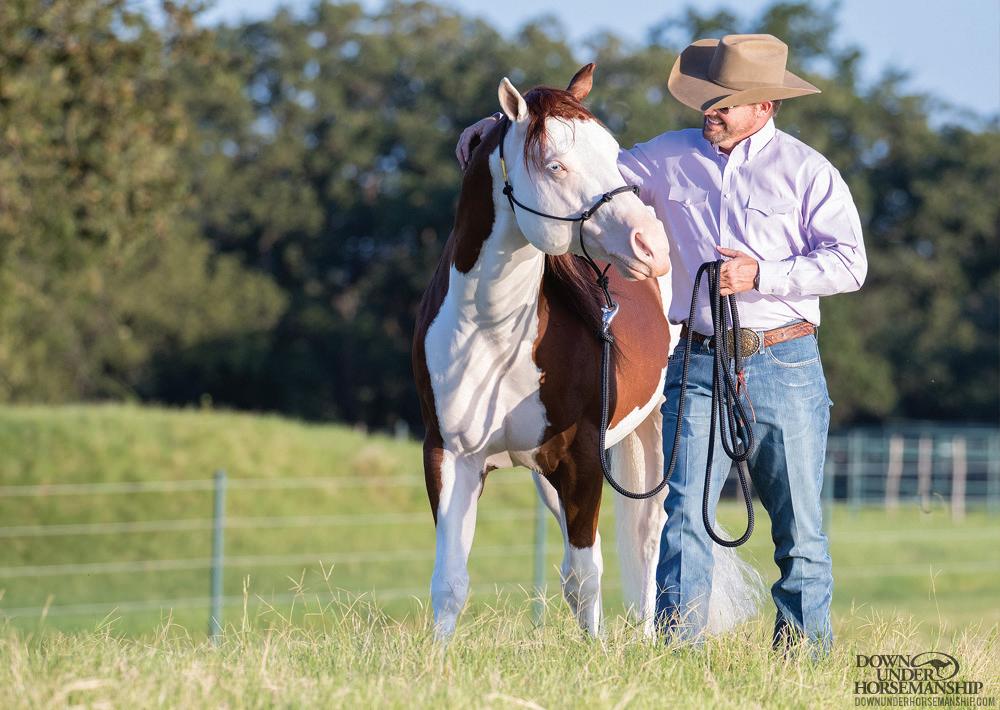
Culprit One: Your Foundation isn’t good enough.
Most lead change problems are a result of a poor or non-existent foundation. Plain and simple: your horse just isn’t broke. Before you begin changing leads on your horse, he should be soft, supple and respectful, and you should be able to control his body from his nose to his tail. Whatever stiffness or resistance your horse has at the walk and trot is going to come out tenfold at the canter.
Let’s be clear about something: Your horse will not execute the perfect lead change the first time you ask him to do the maneuver. Horses are just like us, they don’t learn perfectly. Your horse will throw his head up in the air, he will pull on your hands, he will speed up, etc. That’s all normal.
As long as you do not release the pressure until he’s changed leads and slows down and softens back to you, he’s not getting away with anything or creating bad behaviors. It’s only bad if he throws his head
up in the air, pulls the reins through your hands and takes off. When you release the pressure, he gets rewarded for that behavior.

After a horse changes leads, I maintain the pressure until he softens and slows down and then I ask him to trot and ride him in three circles. I’m looking for the horse to bend his ribcage around in the circle and soften his face.
It’s our nature as humans to get greedy when our horses are doing well. Your horse just gave you four good lead changes, and now you want eight. Be happy with the four. Put it in the bank and come back to working on leads in the next training session. It’s like my mentor Ian Francis says, “Training horses is like putting money in the bank. If every day you put five dollars in the bank, after a year, you’ll have a lot of money built up.”
Drilling on lead changes and asking for more and more and more will result in making the horse anxious or frustrated. When I start teaching a horse to do lead changes, I like to do two or four changes a training session. That’s it. After I get those changes, I’m done for the day.
After a week of practice, once the horse understands the concept, then I practice one lead change in each direction every day for six months. If you change leads once each day for six months, that adds up to a lot of lead changes!
After six to seven months, then I ask the horse to change leads four or five times per day. If you progressively build on asking the horse to change leads, it’s not a big deal. It doesn’t turn into something that he gets anxious about or frustrated with. However, that will happen if you drill on it.
If anytime during the training process I feel that a horse is on the peck or nervous
about changing leads, I don’t work on lead changes. Instead, I go back to the foundation and work on suppling the horse and getting control of his body. Once I’ve got the foundation reset and the horse is soft and relaxed, then I go back to working on lead changes.
If your horse drops to a trot and then switches leads, he’s telling you that you need to drive him forward more. Before you ask for the lead change, you want the horse moving forward with impulsion. You don’t want the horse racing out of control, but you want him moving forward with some energy. I like to think of it as revving the car a little. What you don’t want is for him to lollygag around and be dragging his feet. If he has no forward energy, he won’t have enough momentum to change leads.
Just as important as it is to get the horse moving forward with momentum before the lead change, it’s key to continue riding him forward after the change. A lot of people will cue the horse for the lead change and he’ll start doing the maneuver and then they’ll take their leg off and he’ll lose momentum and dribble down to the trot. You have to ride your horse through the change. Get the change and then remind yourself mentally to keep riding. In other words, don’t let the car die.
Before you ask the horse to change, you should be thinking, “drive, drive, drive,” and after the change it’s, “ride, ride, ride.” Author note: Clinton Anderson is a clinician, horse trainer and competitor. He’s dedicated his life to helping others realize their horsemanship dreams and keeping them inspired to achieve their goals. The Downunder Horsemanship Method gives horse owners the knowledge needed to become skilled horsemen and train their horses to be consistent and willing partners. Discover for yourself how Clinton and the Method can help you achieve your horsemanship dreams at www. downunderhorsemanship.com.
snaffle rings. It also engages the bit to control your horse. However if the curb strap is not adjusted correctly it will not do the job it is meant for. I’ve heard it said that you should be able to put two fingers between the curb strap and your horses chin. Why? If the curb strap is too loose it does not engage the bit anymore than if you didn’t have one. The whole concept of a bit is to change direction and stopping.
pull on the mouth to get a reaction. It is to aid in leverage of stopping the horse. It is to aid in helping the horse to break at the poll (top of the horses head). Thus causing the horse to stop easier and smoother.
It’s one of the most misunderstood pieces of equipment used on your horse; let’s take a look at the purpose of the curb strap.
For instance the Snaffle Bit. The curb strap is used to prevent you from pulling the D ring or the O ring through the horses mouth.

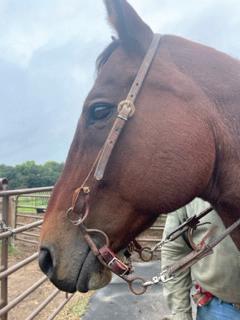
Then there’s the Shanked Bit. The curb strap will serve the same purpose as the
The curb strap is an integral part of the bit. Sometimes even attached to the bit incorrectly. So depending on the bit make sure the curb strap is connected in the right spot. If not be sure to ask someone for help. Otherwise they become an ornament on the bit and it serves no purpose when attached in the wrong spot on the bit. The curb strap needs to be adjusted so that it gives the bridle leverage.
The shanks should be close to running parallel to the horse’s head when asked to stop. If the shanks engage after, or too far behind it serves no purpose. It will also be painful to the horse the more you have to

Most folks do not know that the horse’s lower jaw needs to move forward when breaking at the poll. If the bit is engaged past the backside of the jaw and causing lift, the horse cannot get it’s lower jaw in proper position. This causes discomfort.

Also if the bit engages with the shanks too far back it creates an environment of you versus the horse. Since the horse is 1000 plus pounds you will usually lose and it becomes a bad situation with your horses head way up in the air. So the horse with it’s elevated head allows it to push its chest forward and not respond as quickly to the commands of the rider.

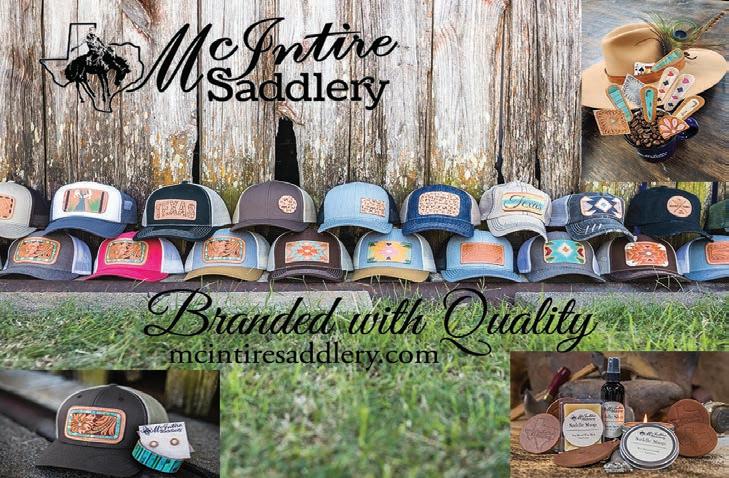

The curb strap needs to be adjusted so the bit engages sooner and signals the horse to stop. Not too tight so that there is constant pressure on his jaw. Set it up and do a test…grab the shanks and pull back gently. You will see how the curb chain tightens and allows the bit to work. Just make sure the jaw gets some relief when the shanks are forward. Immediate and correct communication to the horse is very important.
David Slipka, Rockin S Ranch. David is a PRCA Calf Roper, Team Roper, Clinician, Private Lessons. Contact him at 651-408-8508. Email: Drockinsranch@aol.com. Website: rockinsranchds.com.
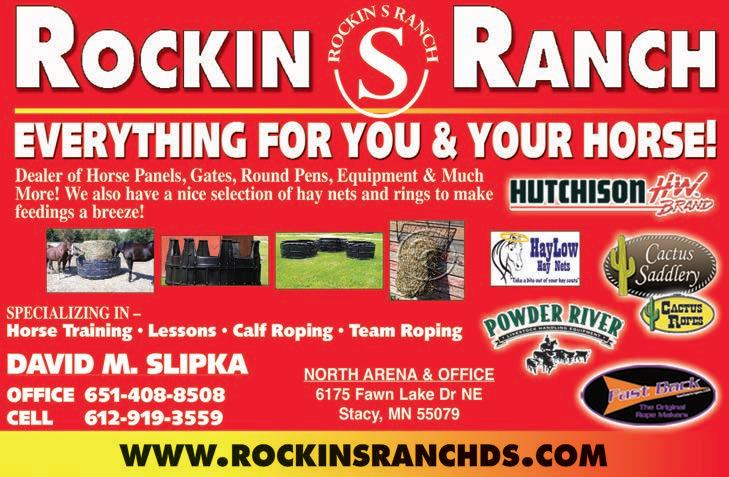
Some horses naturally are light, but even a heavy horse can change and become light, and that’s what I see most often at my clinics. Everyone thinks his horse is fairly responsive until we do the following exercise, and a rider usually is surprised to realize how heavy in hand his horse really is.
No matter what I do with a horse at home or a show, I come back to this exercise from time to time. It keeps any horse’s response quick, soft and light when I pick up the reins.
• When doing this exercise, your hands should be short enough on the reins that you can pull a rein back to your hip and
rest your hand there so it doesn’t move. If your hand moves, that can send your horse mixed signals.
• Walk your horse in a 20-foot circle to the left, for example, and ask him to flex and give his face right, to the outside of the circle. As you do, take off any pressure for forward motion and pull your horse to the outside with the right rein and into a stop. Hold him there until he gives his face in response to the rein pressure and immediately release him. After the release, stand quietly a minute and then walk your horse right back into the circle to the right. Do that three or four times and then flex your horse down to a stop in the other direction.
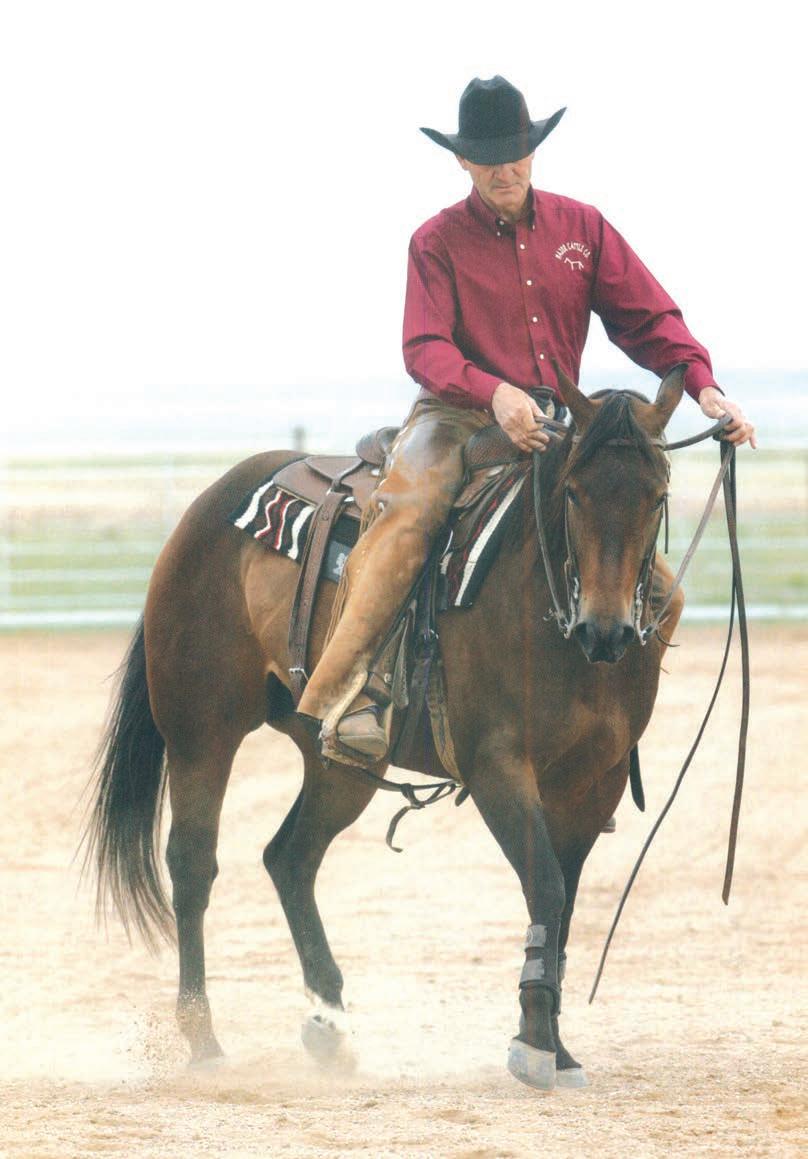
• Your horse shouldn’t pull against your hand but respond quickly to the rein pressure. When you pick up your right hand to flex his face to the side, take slack out of the reins to put pressure on your horse. If his face doesn’t come to the right, don’t jerk his head, but do somewhat forcefully pull his face to the side, with your hand going back to your hip promptly.
• When you go to the hip with your rein hand, don’t pull slowly. Take your hand immediately back to your hip. Don’t jerk your horse’s head, but tell him to give it to you now. He needs to know that when he doesn’t flex and give, there’s a consequence.
• If you must hold your horse’s head to the side until he gives slack in the rein and relaxes, keep your hand still at your hip. Your horse might walk in circles for a minute or two before he finally figures out to give his face. A stiff, rigid horse might turn around in circles for five minutes. Sit there and hold him. With your hand steady against your hip or upper thigh, you can hold without bumping the horse’s mouth, which signals him to move.
• Always flex your horse to the outside of the circle. If you take his face to the inside, his hip goes to the outside, and he doesn’t learn to use his back legs to keep his balance. Don’t let him disengage his hip as you might do with a colt. In taking the face to the outside, you teach your horse to be soft on the front end, yet keep his weight
on his back end. That helps your stops and other maneuvers.
• Teach your horse to be light in the circle and then on a straight line, where his back end must really get into the ground. Then he learns to use his back end and to give his face, and to do both, he must stay light on his front end. When a horse braces on his front feet, he usually pulls against the bridle reins, but when his face is to the side, he really can’t brace with his feet.
• When your horse gives his face consistently, occasionally let him come through that turn to the outside, moving his front end around to walk the circle the other way. After he understands what you want, bump him with the calf of your outside leg as he starts turning, but don’t use your spur. The bump starts teaching your horse to move off your leg. As he turns, he also learns to step one front leg across the other, to be soft in a turn without being scared, to hold his back end in place and to keep his front end elevated—the foundation for your spins. Consistent, quiet work here means smooth, solid spins later.
You also can use this exercise to lighten up a finished horse before you show him. The exercise helps him understand to keep his face to the inside of a turn when you ride one-handed.
When your horse’s response is soft at a walk, trot a big circle and flex him to the outside. Don’t tense when you do, but stay soft and loose in the saddle. Like before, take out the slack to flex him, and go to your hip. All you really ask your horse to do, at this point, is set his butt in the ground and give you his face. If that doesn’t happen at the trot, go back and work at the walk.
You can progress to do this pull-to-thehip exercise in a lope after your horse understands what to do at a walk and trot. Lope your horse in a circle; then pick up the rein to move him outside the circle. If he pushes against the bridle, go to your hip and flex him down right then. You might have to do that two or three times in that first session, but about the fourth time, your horse is right there with you, responsive and light.
An important thing you accomplish: Your horse becomes more responsive without you pulling straight back on his head, which often leads to resistance.
Another important thing this pull-to-thehip maneuver accomplishes: That horse learns to stop and wait for your signal about what to do next.
Pulling the bridle rein immediately to your hip isn’t being mean to your horse, but does teach him to be attentive.
Mean is when a rider lopes circles and expects a light response, but hasn’t laid the groundwork for it at a walk and trot. That’s isn’t at all fair to the horse and adds nothing to your riding program.
Your horse learns to be attentive because you build the response you want. After he understands but doesn’t respond when you lift a rein, flex him down, even in a lope. The ride might be a little rough at first, but he remembers to come to you when you pick up the reins.
A horse tends to get heavier in hand with faster speeds. He can lope slowly and be soft but add speed, and he usually gets pushy in the bridle. His back flattens, and it’s hard for him to stay gathered. Occasionally pick up the speed to check your horse’s response and, if necessary, teach him to stay light as you gain speed.
This exercise is also great to use on the days you condition your horse. You can keep him very responsive without burning him out on maneuvers like spins or stops. Once your horse has learned such maneuvers, it all comes down to keeping him responsive and in condition.
Reprinted from the book “Ranch-Horse Versatility: A Winner’s Guide To Successful Rides” with permission from Western Horseman.
You can find out more in his book by Western Horseman, Ranch-Horse Versatility: A Winner’s Guide To Successful Rides
Follow Mike Major Horsemanship at facebook.com/mikemajorhorsemanship or www.majorcattleco.com or call (940) 872-3742.
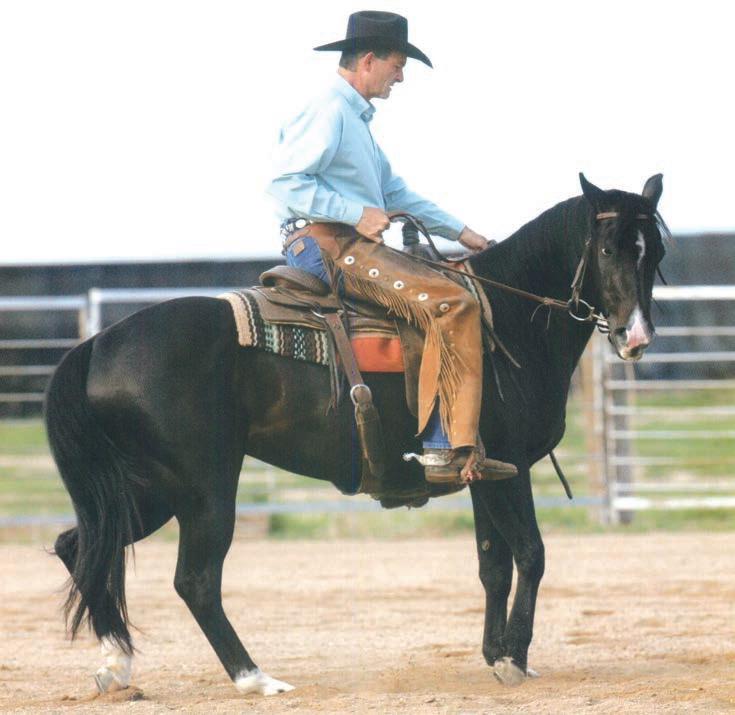
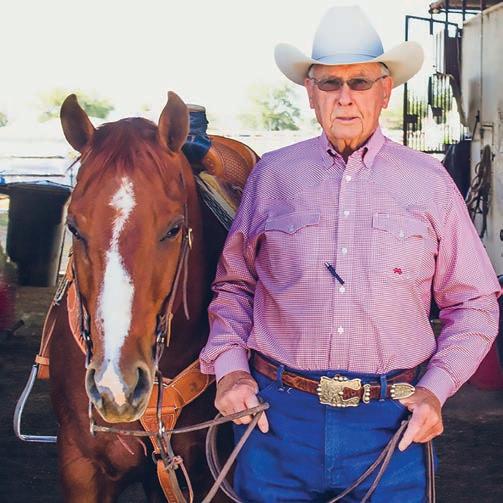
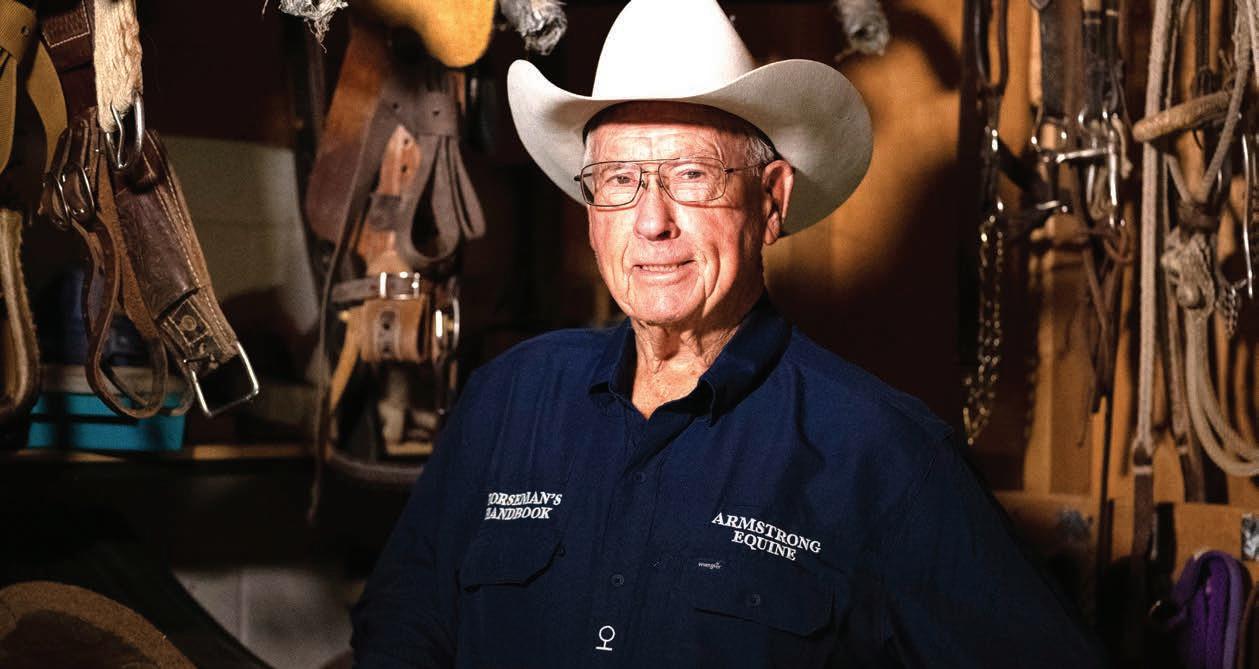 BY ED ARMSTRONG, ARMSTRONG EQUINE SERVICE
BY ED ARMSTRONG, ARMSTRONG EQUINE SERVICE
Many of the best horsemen to ride this earth have gathered their techniques and information over decades. Even better horsemen gather their information over decades and miles.
Horsemanship has been an oral tradition among tradesmen such as farriers, colt starters, ranchers, cowboys and buckaroos. Singers and songwriters have also passed down equine traditions through their lyrics. Although many books have been written for equine veterinarians and college students, until now it was hard to find a book that encompassed beginner horsemanship for the adult. One that included terminology of an expert horsemen described so that anybody could understand. One that was written by a man with real applicable horsemanship skills on the ranch, trail and in the showpen.
Joe Armstrong, PhD, has written just that, and it is available for purchase after October 1, 2023.
“After working with so many youth and adults, I felt I needed to write this book to share practical advice on how to have a
more enjoyable and fulfilling experience with your horse, and provide simple methods for quality care to avoid the mistakes and disappointments that come with having to learn it all on your own,” Armstrong said.
His early equine knowledge came from Coffeeville, Mississippi via his grandfather. As he grew and gained a college education, he couldn’t help but think about horses. At that time, college programs were only titled Animal Husbandry and mainly focused on breeding and raising cattle. Nevertheless, Armstrong applied his knowledge to equine breeding.
This was also around the same time that the American Quarter Horse Association (AQHA) was in its infancy. Armstrong attended an AQHA judging seminar and was the only person to place all of his classes correctly. Through
Continuedonpage46>
Fall is in the air and it always makes us think of pumpkins, squash and sweet potatoes for filling and flavorful fare. These two recipes will not disappoint. In fact these muffins are so popular that we usually make a double batch!
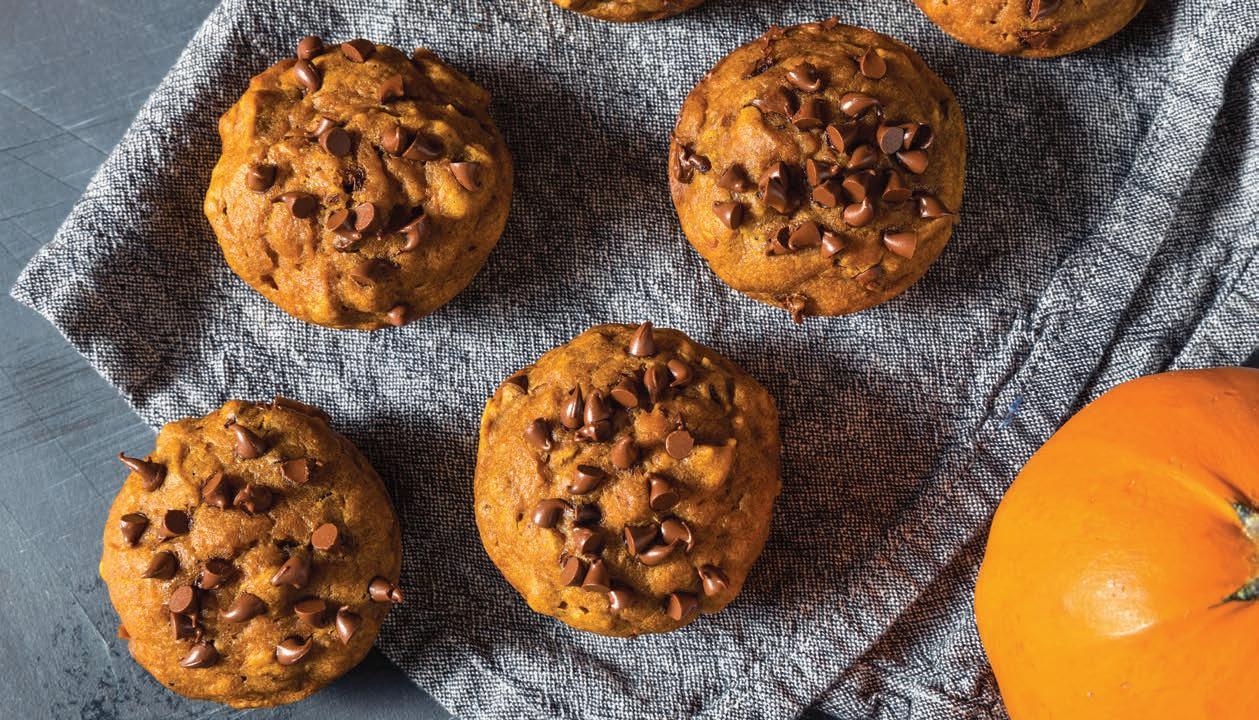
1 2/3 cup all purpose flour
1 cup granulated sugar
1 tablespoon cinnamon
1 teaspoon baking soda
1/4 teaspoon baking powder
1/4 teaspoon salt
2 large eggs
1 cup plain pumpkin (half of a 1 lb. can)
1/2 cup (1 stick) of butter melted
1 cup chocolate chips
Mix all dry ingredients together in large mixing bowl. Add beaten eggs, pumpkin and butter to a nother bowl. Whisk until well blended. Add into dry ingredients. Stir in chocolate chips. Grease muffin cups or put in paper or foil baking cups. Bake at 350 degrees for 20 to 25 minutes, or until muffins are springy to the touch.
2-3 large sweet potatoes (peeled and sliced thin)

1 large yellow onion (sliced thin)
1 head of fresh broccoli chopped or a bag of fresh green beans
1 package of chicken apple sausage or brats (diced)
Olive oil
Sea salt and pepper
Heat skillet to Med/High heat. Add 2 to 3 tablespoons of Olive Oil. Add sweet potatoes first, then broccoli or green beans. Add in sliced onion and diced sausage. Sprinkle on Sea Salt and Black Pepper to taste. Cover and cook stirring often. Sprinkle a little more Olive Oil on if needed during the cooking process. Also add a little more salt and pepper if desired. At the end (when sweet potatoes are getting soft) we like to take the cover off and let the ingredients get a little crispy.
Note: You can add whatever vegetables you have on hand to this dish. We have added carrots, brussel sprouts, red peppers, zucchini, golden or red potatoes, etc. Sometimes we have thrown in a little fresh kale at the end.
one simple seminar he earned a No. 1 rating and became the youngest person to earn an AQHA Judges card.
Armstrong went on to learn or teach horsemanship in many states as well as Canada, Mexico, El Salvador, Venezuela, Brazil, Uruguay, Argentina, Dominican Republic, Cuba, Russia, Ukraine, Sweden, Denmark, Germany, Luxemburg and Japan.
Over his many travels, he found the best ways to explain and teach horsemanship to every walk of mankind.
“For decades, Dr. Armstrong has been a leader in advancing the American Quarter Horse around the world,” Clay Mathis, King Ranch Institute for Ranch Management Director, said.
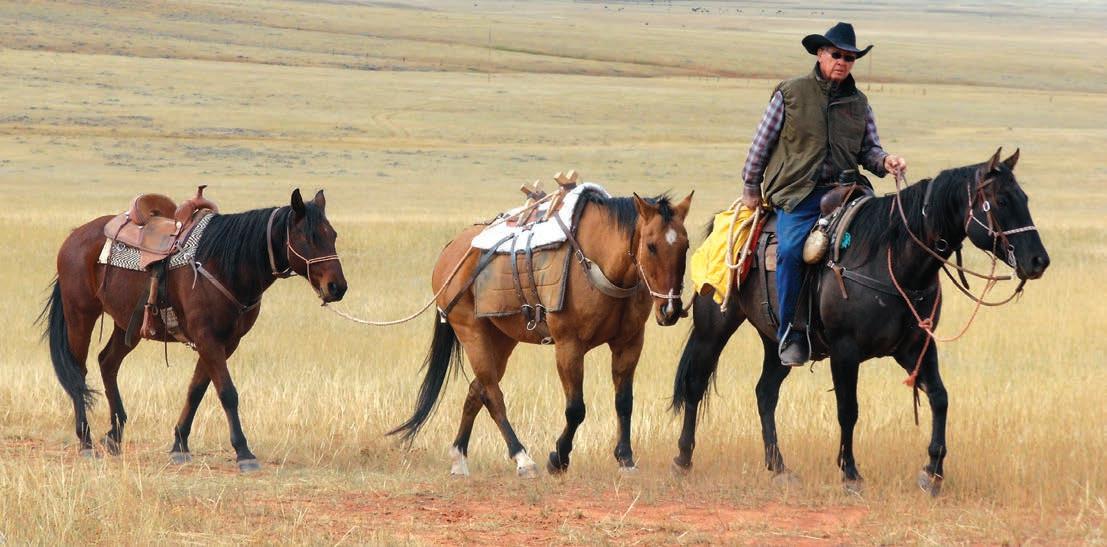
Settling back in New Mexico, Armstrong revitalized the New Mexico 4-H Horse Program, instituted the New Mexico State University Horse Judging Team, started the NM 4-H Horse School, began a week-long wilderness Horse Packing & Outfitting course, introduced NMSU to the Intercollegiate Horse Show
Association, sponsored and recruited for the NMSU Rodeo Team and began a student produced horse sale.
“Joe has been a friend and a mentor to me and my wife in the equestrian world. His knowledge and expertise is without equal,” Dr. William T. Baker, MD of Las Cruces, NM said.
As a man who dedicated his life to the journey of horsemanship, he also made it welcoming for others to step foot in this journey. That has been recognized by his induction into the New Mexico 4-H Hall of Fame, his New Mexico FFA Honorary State Farmer status, his award for being an Outstanding Professor in the NM College of Agriculture and his induction into the German Quarter Horse Association Hall of Fame.
His accolades have also been published in the Western Horseman magazine in September 2018. Not only a teacher, Armstrong is a competitor and breeder himself, bringing firsthand experience to the judges chair and the classroom. This year he has once again qualified for the AQHA world show and has plans to compete in Ranch Riding.

Now 86, in October of 2023, Armstrong’s book, Horseman’s Handbook; Horse Ownership, Care and Enjoyment, will be available to the public.

The Horseman’s Handbook by Joe Armstrong is unlike any other horse help book. From the expert to the beginner, everyone interested in horses can benefit from Armstrong’s advice. Armstrong has unabashedly provided the truth about horses and buying your first horse. His no nonsense tips are simple, he will not lead you astray. He teaches the beginner how to not only care for a horse, but continue its training through beneficial every day interactions.
Beautiful illustrations aid in the book’s usefulness and put the reader right in the barn with Armstrong.
Join Joe Armstrong, PhD, and his many students (now horsemen) from around the world, in learning generations and decades of knowledge from this lifelong professional horseman. Find yourself in the mountains of Wyoming, barn isles of Armstrong Equine Services, as well as veterinary practices and show arenas across the nation. The useful, eloquent and entertaining book will be available for purchase October 1st on HorsemansHandbook.com and on Amazon, https://www.amazon.com/dp/ B0CDFWT1QJ Personalized inscriptions will be available for orders placed at HorsemansHandbook.com.
